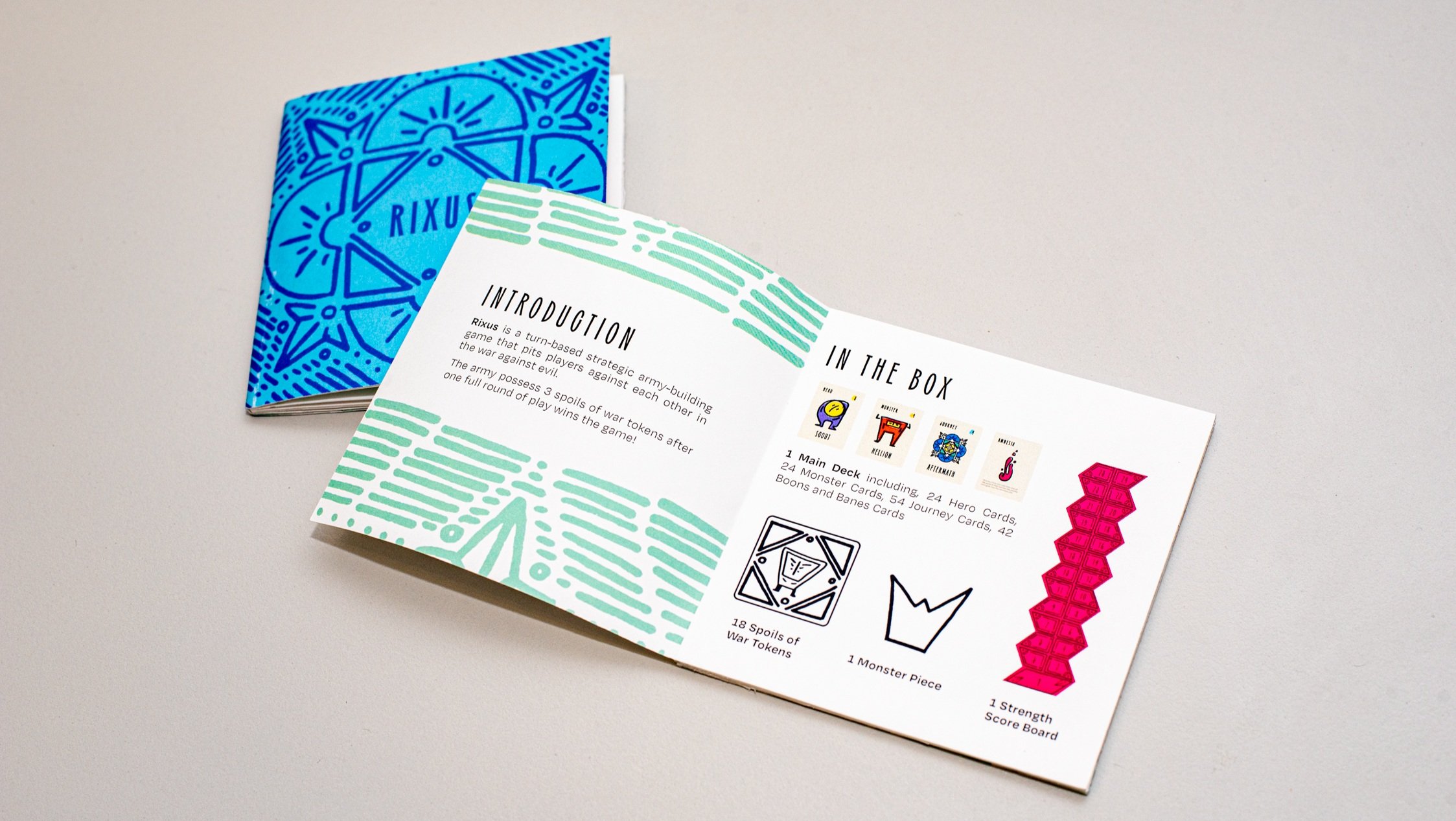RIXUS
~
RIXUS ~
RIXUS
Card Game Design
Logo, Typography, User Experience, Layout, Illustration, Packaging
Art Director: Scott Laserow
Rixus is a fun casual card game you can play with friends and family. The game entails building your hero army to take down monsters and win the spoils of war before your opponents take them. Along the way, you shepherd your heroes on their journey and deploy boons and banes to get your army closer to victory.
Why a Card Game?
This experience was the definition of a passion project for me. My family and I always bonded over discovering and playing new or unique games. We have a collection of games that could rival any game store and continue to be on the prowl for whatever is new in the game world. After playing so many games throughout my life, creating something for my family to play together and place on the shelf next to the classics (Exploding Kittens, Cataan, Five Crowns, etc.) is an accomplishment I am very proud of.
A card game is also a great design project because it encompasses every aspect of design thinking and application. The mechanics are all about user experience design and testing. The game cards and instructions are opportunities for clear and creative layout, image making, and typography. Finally, the box and game pieces are a chance for 3D design application and packaging. I also built my game physically, which required printing knowledge and hand skills.
Designing the Game
Mechanics
At its core, a well-made game is all about user experience design. If the players don’t have fun, no one will play the game again. But, there are many types of card games for different types of people, and it is important to narrow down the target audience before making decisions about the mechanics and complexity. Luckily, I knew my target audience well, they were my friends and family.
The Audience: People with a passion for tabletop games and who are looking for a fun unique game with a competitive edge.
Before doing any visual design, I needed to nail down the game's basic mechanics. Without the mechanics defined, it is impossible to identify the deliverables necessary for the game's overall ethos.
-
I held multiple brainstorming sessions with people across experience levels to gauge the evolving mechanics against different people’s ability to picture the final game. I also tapped into some of my more experienced friends' and family’s expertise, asking if any mechanics or abilities seemed absent from my framework.
Once I had a basic instruction framework, I prototyped my game with index cards and played it with different groups of people, making sure to vary the size and experience level of each group. These playtesting sessions allowed me to hone in on the correct ratios of cards in the deck and the types of cards that would increase the players’ enjoyment.
An example of how the play sessions directly affected the final result came after one play session in particular. One player noted that it was taking a long time for players to complete a hero’s journey. And other players wanted a “wild card” to augment their journeys. I wanted to use their feedback, but I couldn’t make it too easy to finish a journey. After that session, the shortcut card was added to the deck, giving players the ability to take a shortcut in building their journeys but it would ultimately weaken their hero’s overall strength score and leave them vulnerable to the monsters.
-
Introduction
Rixus is a turn-based strategic army-building game that pits players against each other in the war against evil. The army possess 3 spoils of war tokens after one full round of play wins the game!
Set Up
Remove all 24 monster cards from the main deck and shuffle the remaining cards. Deal each player 5 cards. The space in front of each player is their army camp; any hero or journey card added to that space becomes part of the player’s army.
Add the 24 monster cards back to the deck and shuffle. Place the shuffled deck in the middle of the table with plenty of space on either side. The left side will be the cemetery pile, holding any slain heroes, monsters, or cards discarded from a player’s hand during the game. The right side will be the area for the monster army camp and the monster strength board. If at any time throughout the game, the main deck runs out of cards, players can shuffle the cemetery deck and turn it face down to begin a new deck.
The player that has the longest journey (oldest) goes first and the play continues clockwise.
A Turn
Player take turns by going clockwise around the table. Players can take up to 2 actions on their turn.
The Actions
Draw a card from the Main deck
Play a card and enact any effects written on the card
Declare War worth 2 actions
Once the player has taken both of their actions the play moves to their left. A player can never have more than 5 cards in their hand at the end of their turn.
Declaring War
On your turn, you can forgo any other actions and declare war. Once a war is declared the monster army is flipped over and the strength score is marked on the strength board. Every hero on the table is also drafted to the war.
The hero with the lowest overall strength score is the first to go against the monster army. When a hero goes up against the monsters, you subtract the hero’s strength score from the overall Monster Army strength score. If the hero’s strength is less than the overall score of the Monster Army, then the hero is slain and added to the cemetery pile. After a hero is slain the Monster Army strength score is reduced by the slain hero’s score. Play continues to the next lowest-strength hero and so on, until the hero that is up against the Monster Army has a higher overall strength score. The hero whose score is greater than the monster army’s score gets the final blow and returns to their army with a Spoils of War token.
IMPORTANT: A player cannot declare war on an army consisting of a single monster. If the Monster Army grows to five monsters, a war is immediately triggered
Special circumstances
If any player does not want to participate in the war and they have the surrender boon card, they must play it before the monster army is flipped to opt out of the war.
If more than one player has the weakest hero, both players add up their army’s overall strength scores and whoever has the weakest army is the first in battle.
If no heroes can overwhelm the monster army, the spoils of war token goes to the monsters and the monster army is moved to the cemetery pile and reset.
Winning The Game
The first player to have 3 spoils of war tokens at the beginning of their turn wins the game.
Designing the Game
Visuals
Card games also need cohesive branding. From the moment the players pick up the game box to the announcement of a winner, every interaction with the game should be consistent.
Once I had the basic mechanics nailed down it was time to dig into the overall visual design. I had a basic idea of what visuals I would need; I had already decided on having an archetypal good and evil dynamic and leaning into the trope of a “hero’s journey.” I knew the backbone of the game would be the heroes and the monsters, and their character designs. I also knew that fantasy heroes and monsters had already been done quite a bit in the tabletop community and I wanted my design to stand out from other games on the shelves. I did research into different character designs and techniques that were prevalent and decided to stick to a more raw, abstract method of illustration because of its blend of whimsical and intellectual styles. The nature of this kind of illustration harkens back to the iconographic images created by early humans which go hand in hand with universal themes of good, evil, and journeys.
The decision for color palettes was also a decision heavily influenced by historic traditions and motifs. I relied on the archetypal uses for each color when assigning them to different applications. The heroes and other positive cards utilized cool tones such as blues, teals, and cool purples. The monsters and other negative cards utilized warm tones such as reds, yellows, oranges, and warm purples.
The Name
The reasoning behind the name was in the same vein as the decisions made for the illustration. When thinking about a name for this game, I wanted it something relatively abstract to mirror the visual identity but still have a connection to the gameplay. The word RIXUS is a Latin word meaning to brawl, or having brawled. It was the perfect title because most players will regard it as a nonsense word, but it has deep roots in the language that is the mother of all other romantic languages.
Card Motifs
Heroes
Deciding whether the illustration will be abstract is much different than executing that illustration. I looked back at the doodles I drew in my childhood for inspiration. Children’s drawings are free from any societal constraints and can provide new dynamics to explore in the iterative process. I went back to the tools that I was most comfortable with, Crayola markers, to bring out that low-stakes carefree feel. I drew pages and pages of hero designs, trying to hit that perfect blend of whimsy and sophistication.
One day I did it, I captured that lightning-in-a-bottle effect, the character was well thought out but looked as if no effort had been taken to create him. There was a certain flow in the shapes and placement of the different body parts. Once I had one hero I was happy with, it was easier to iterate on the general aesthetic. I tackled the heroes first because they are the core of the game and the card the players will identify with most.
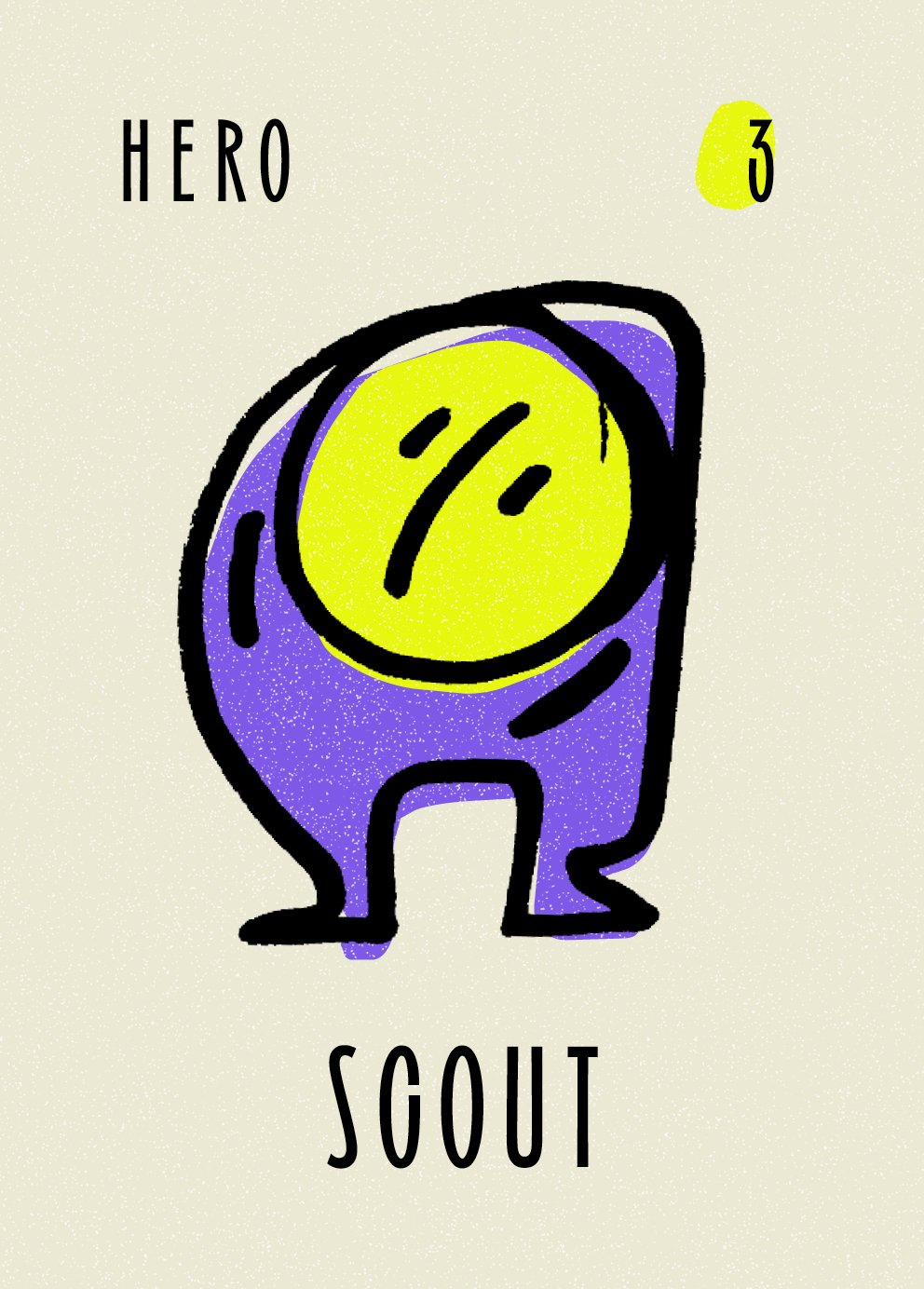
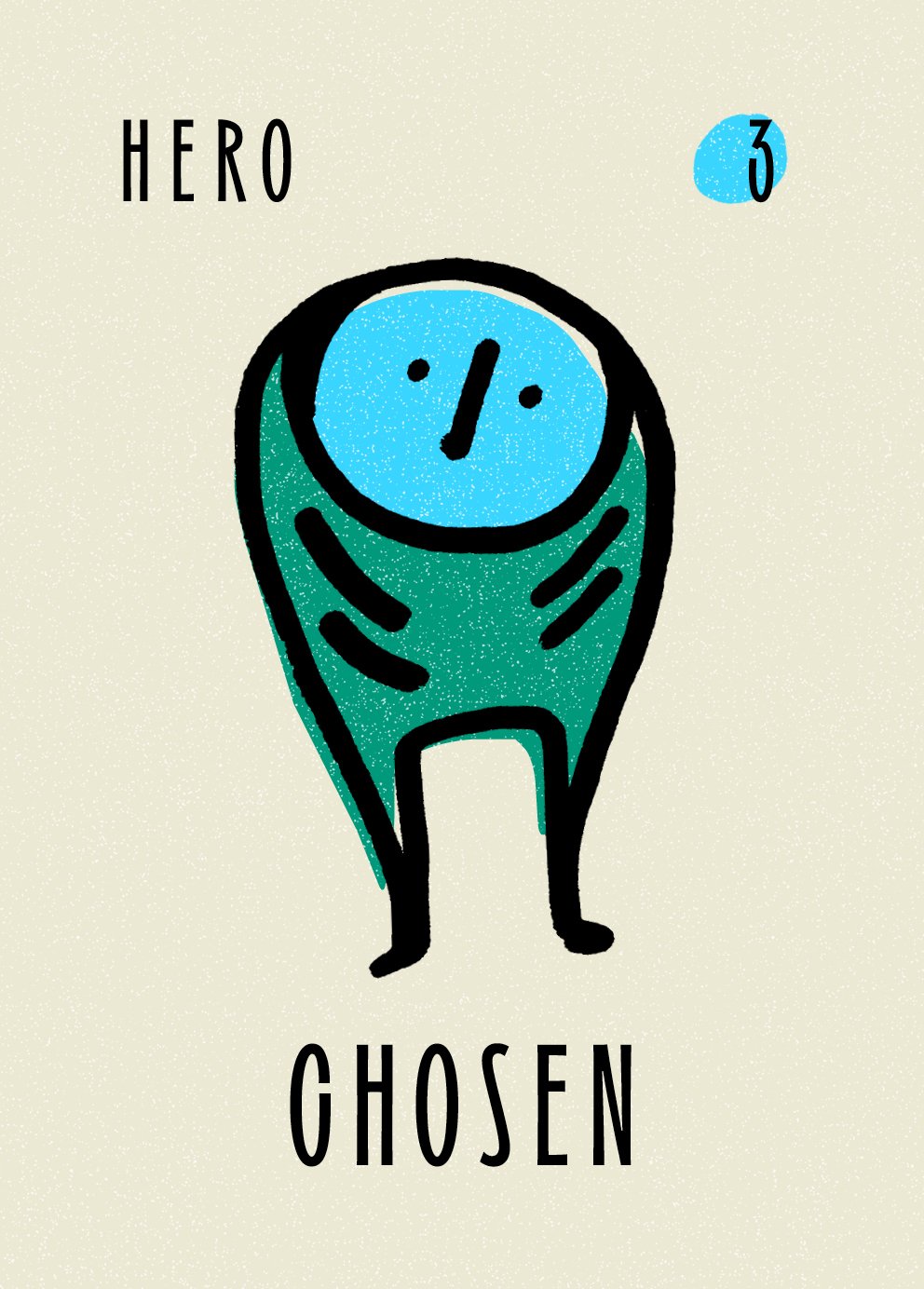
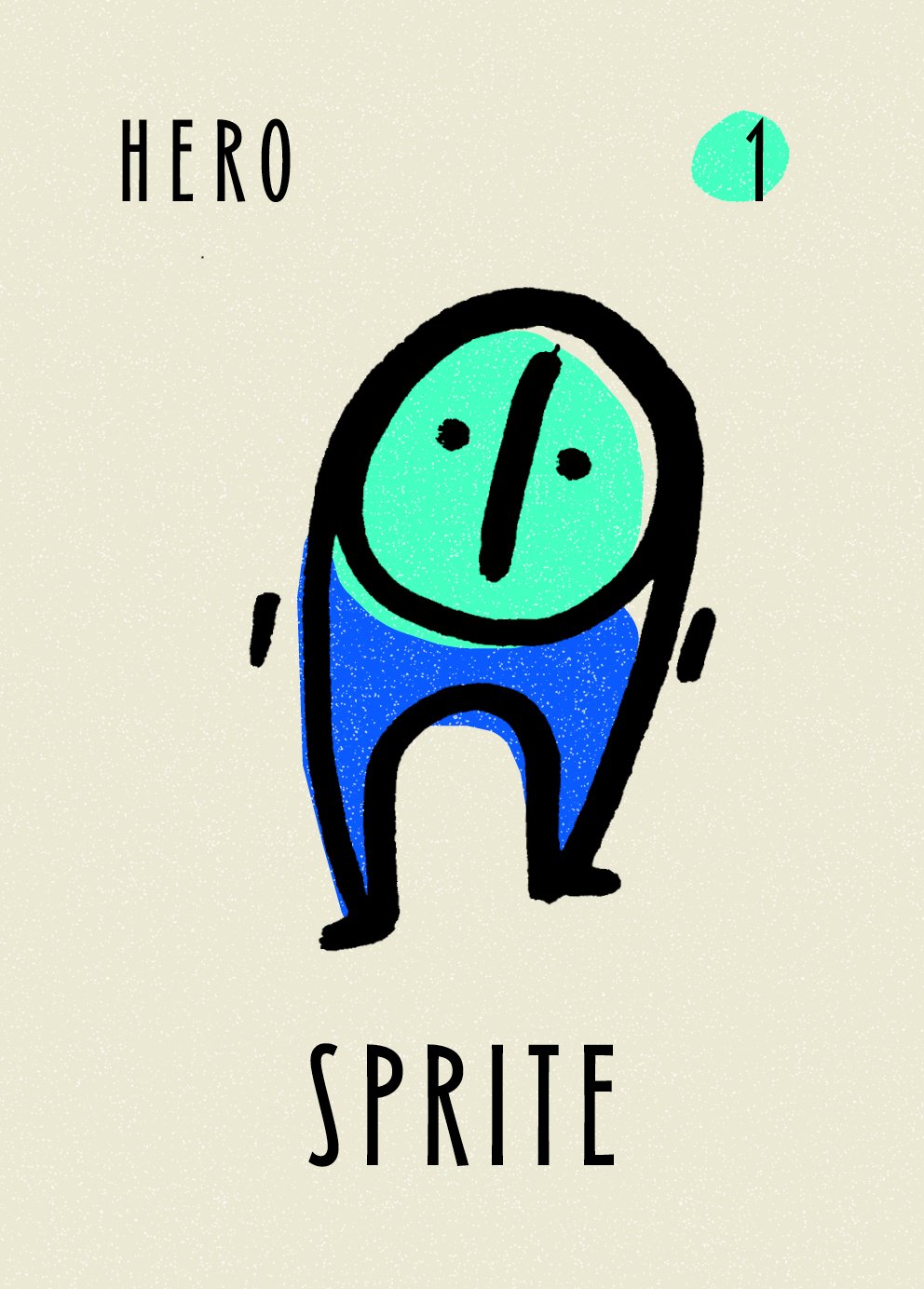
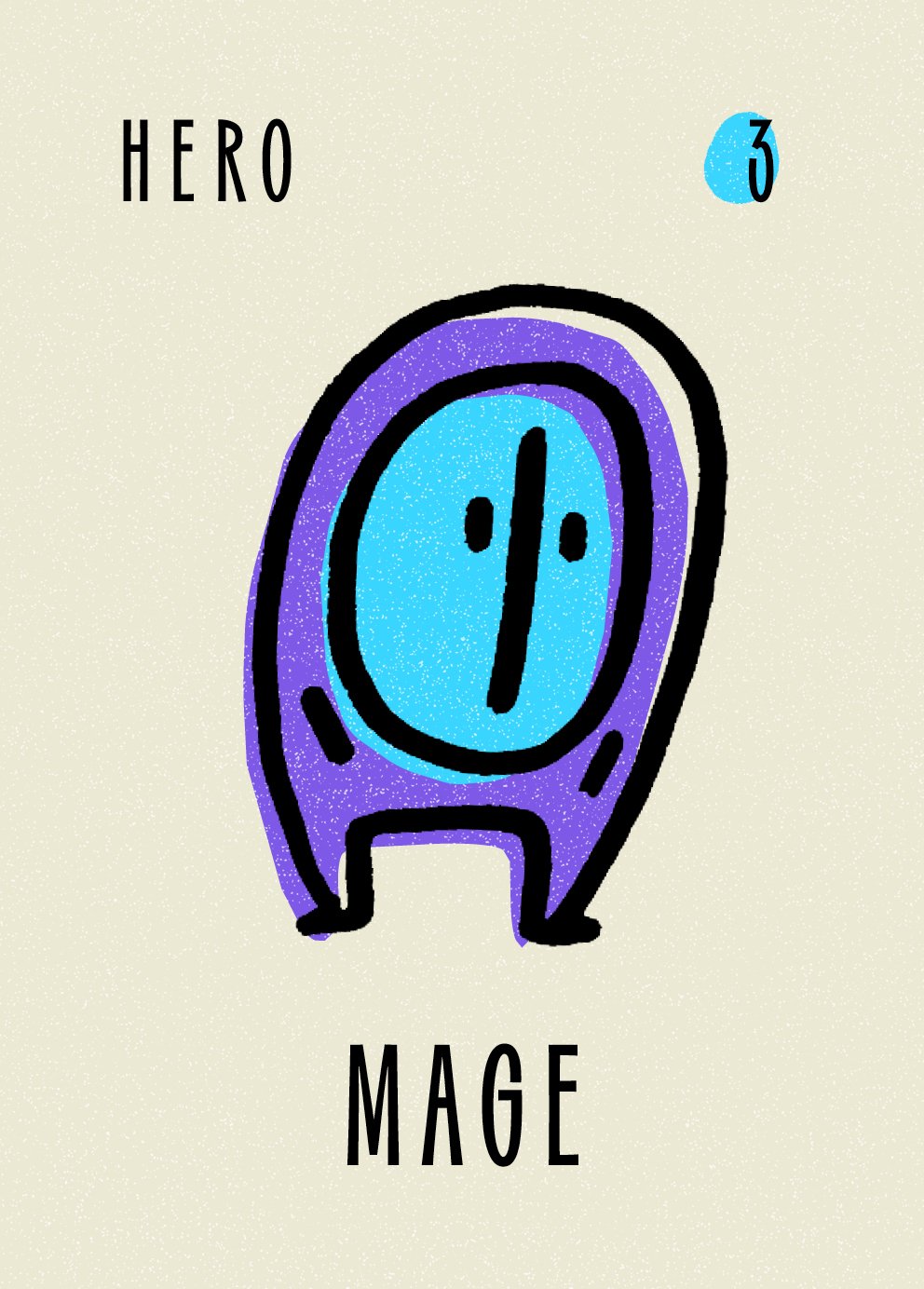
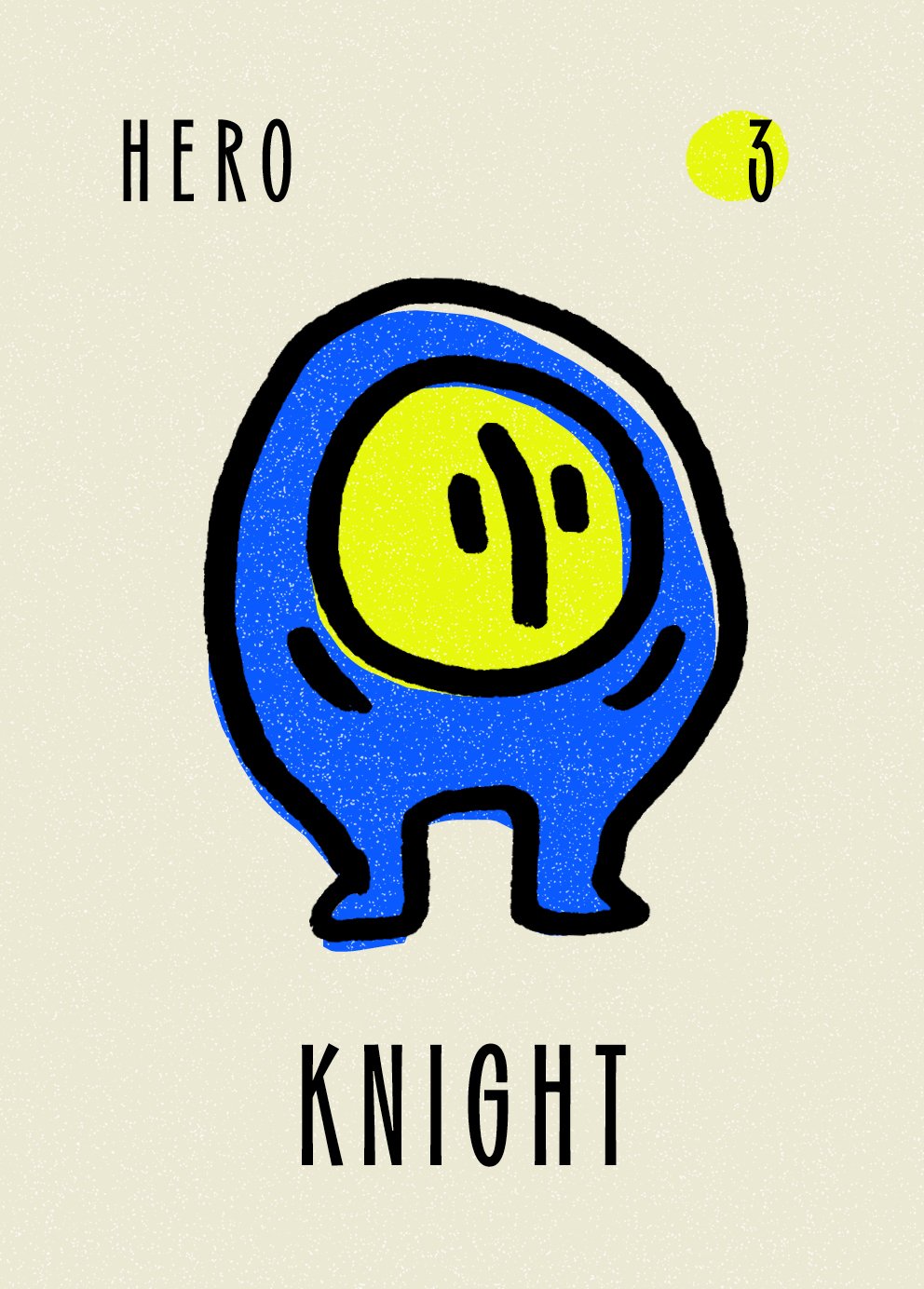

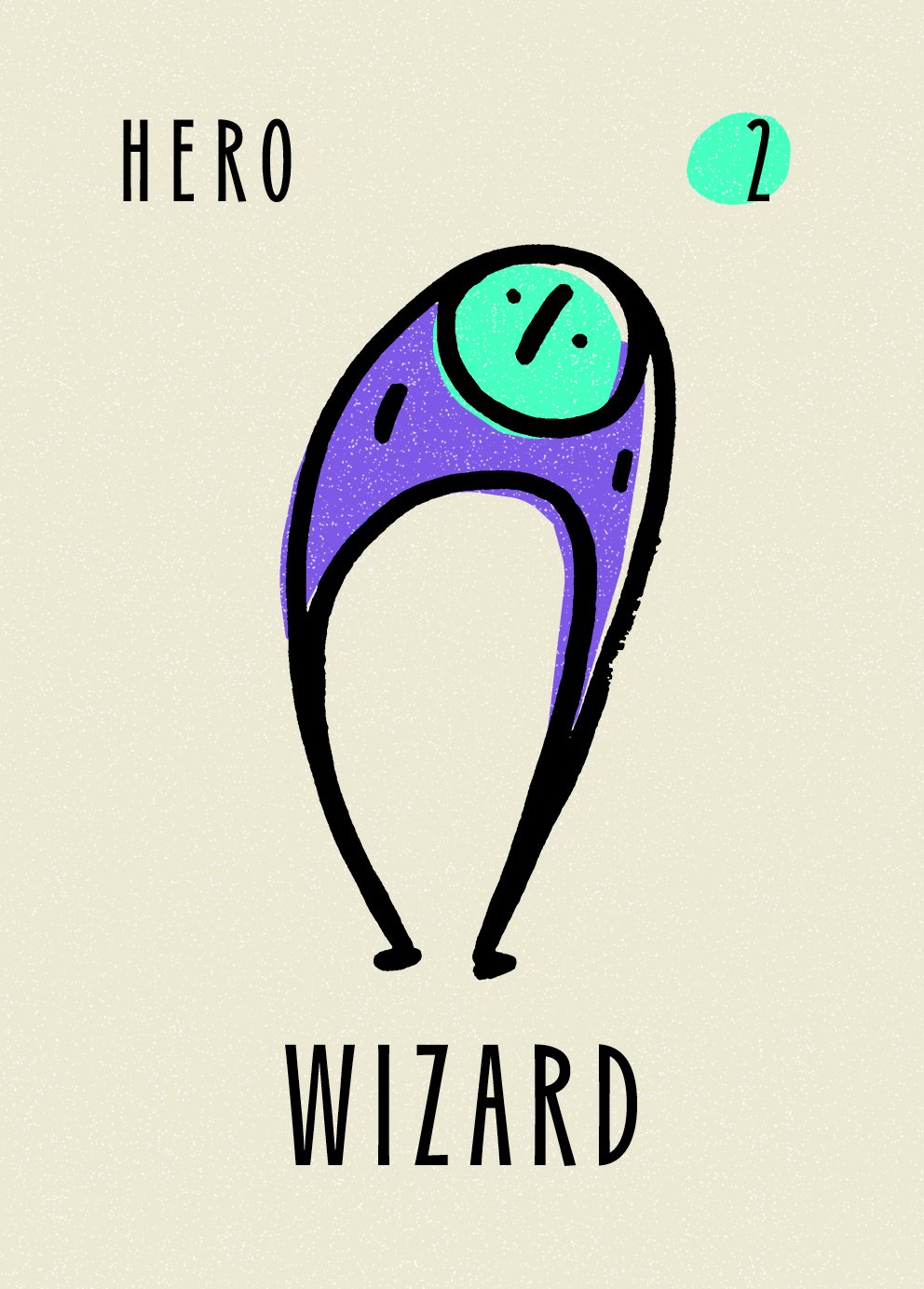
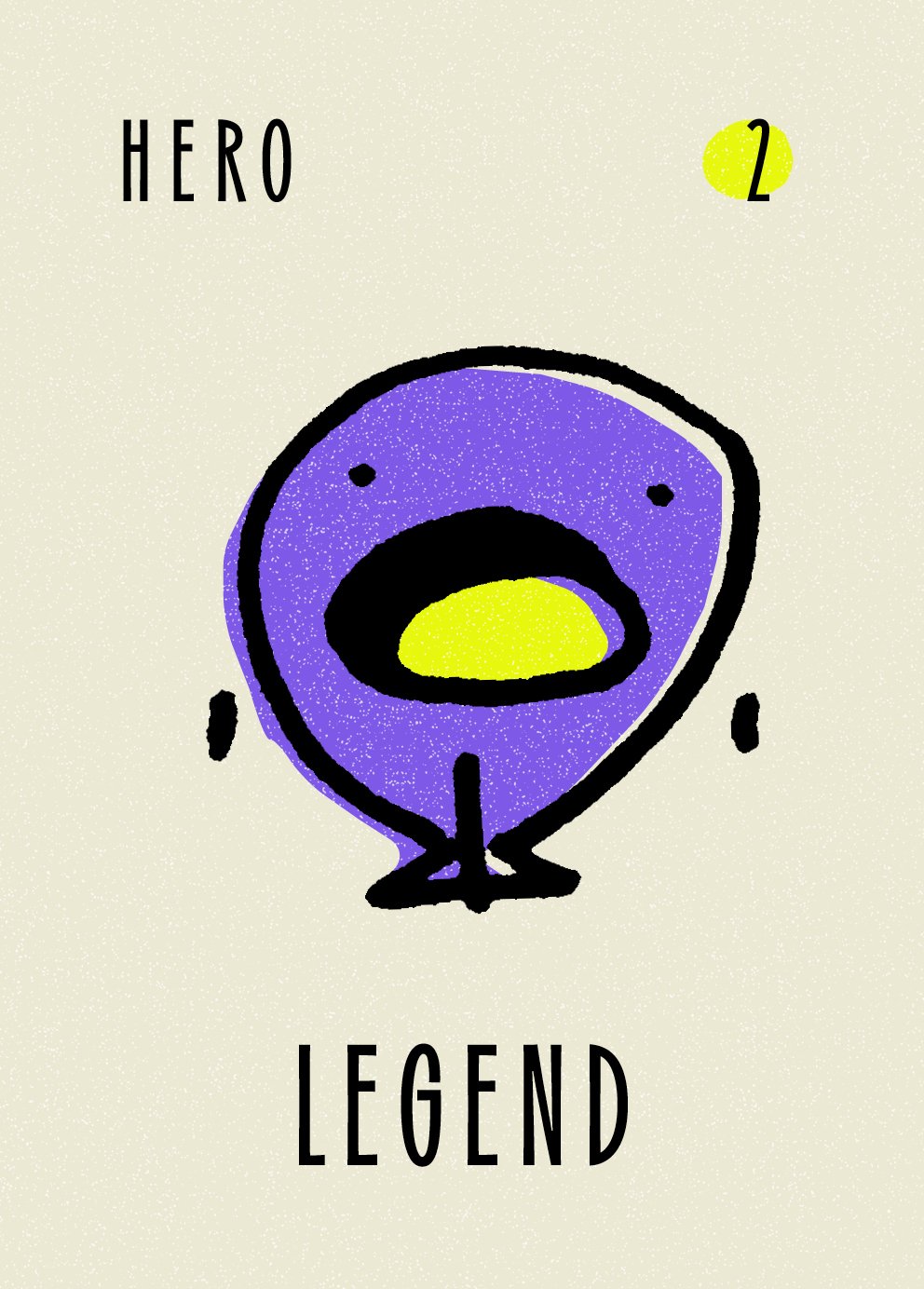
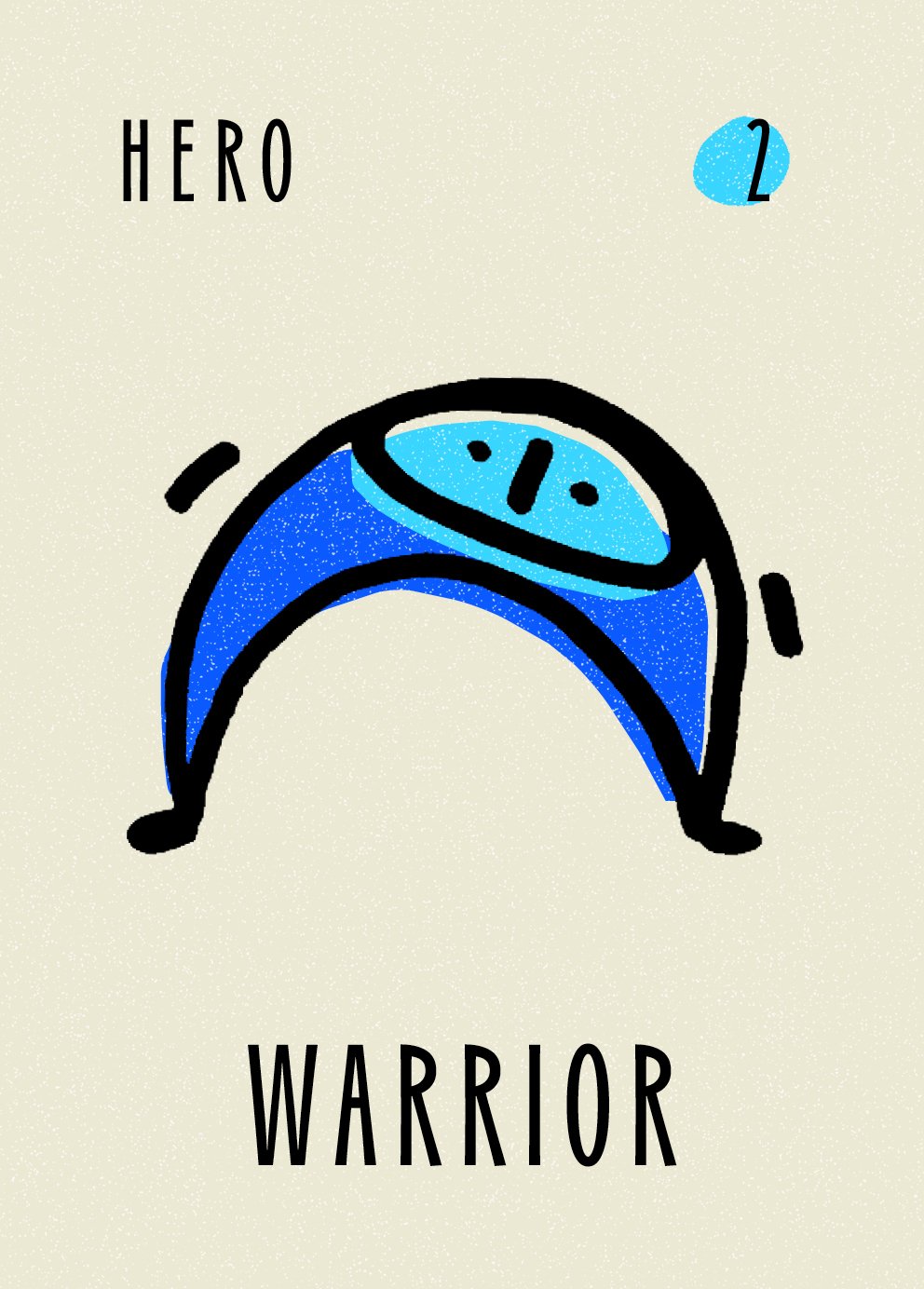
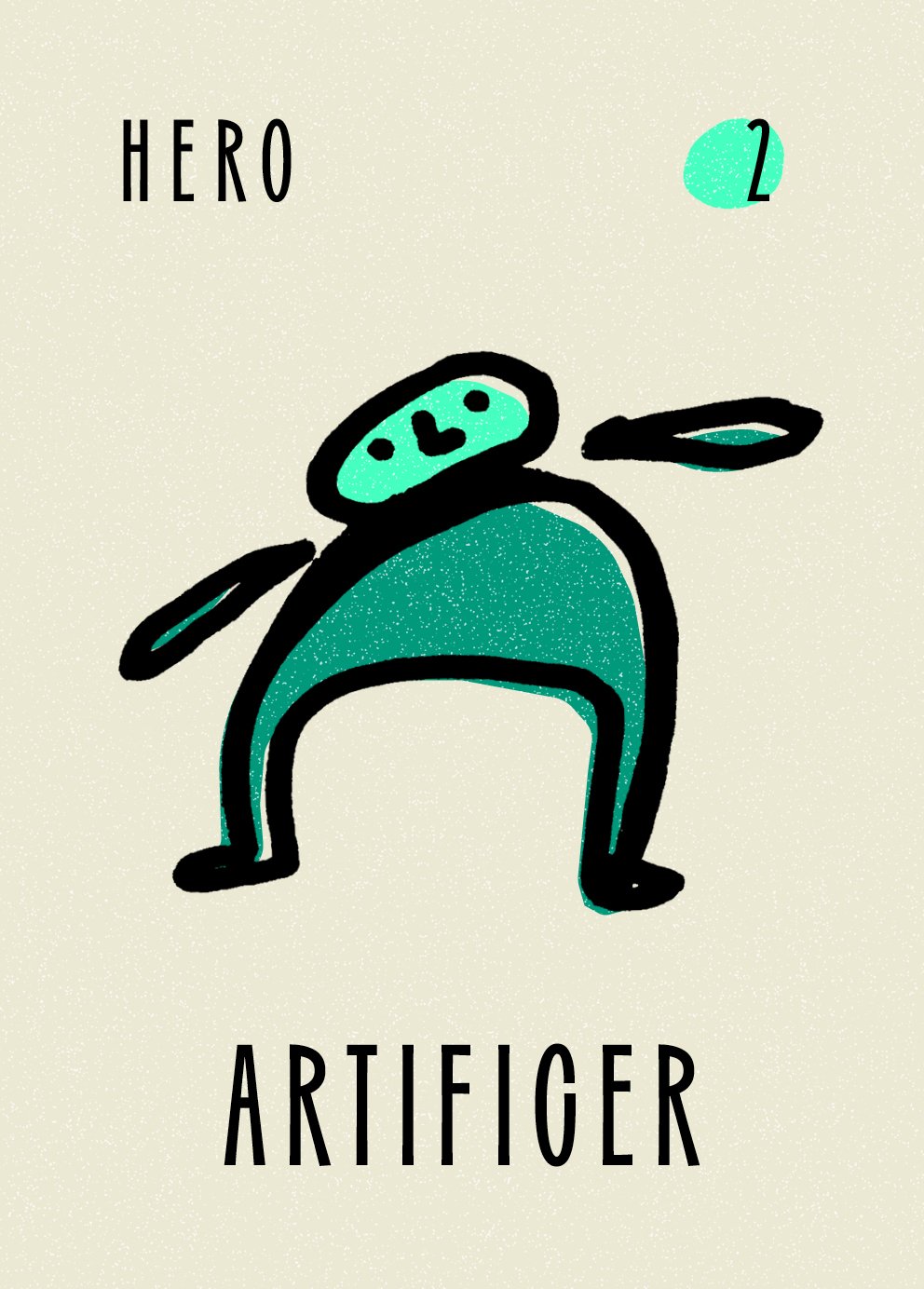
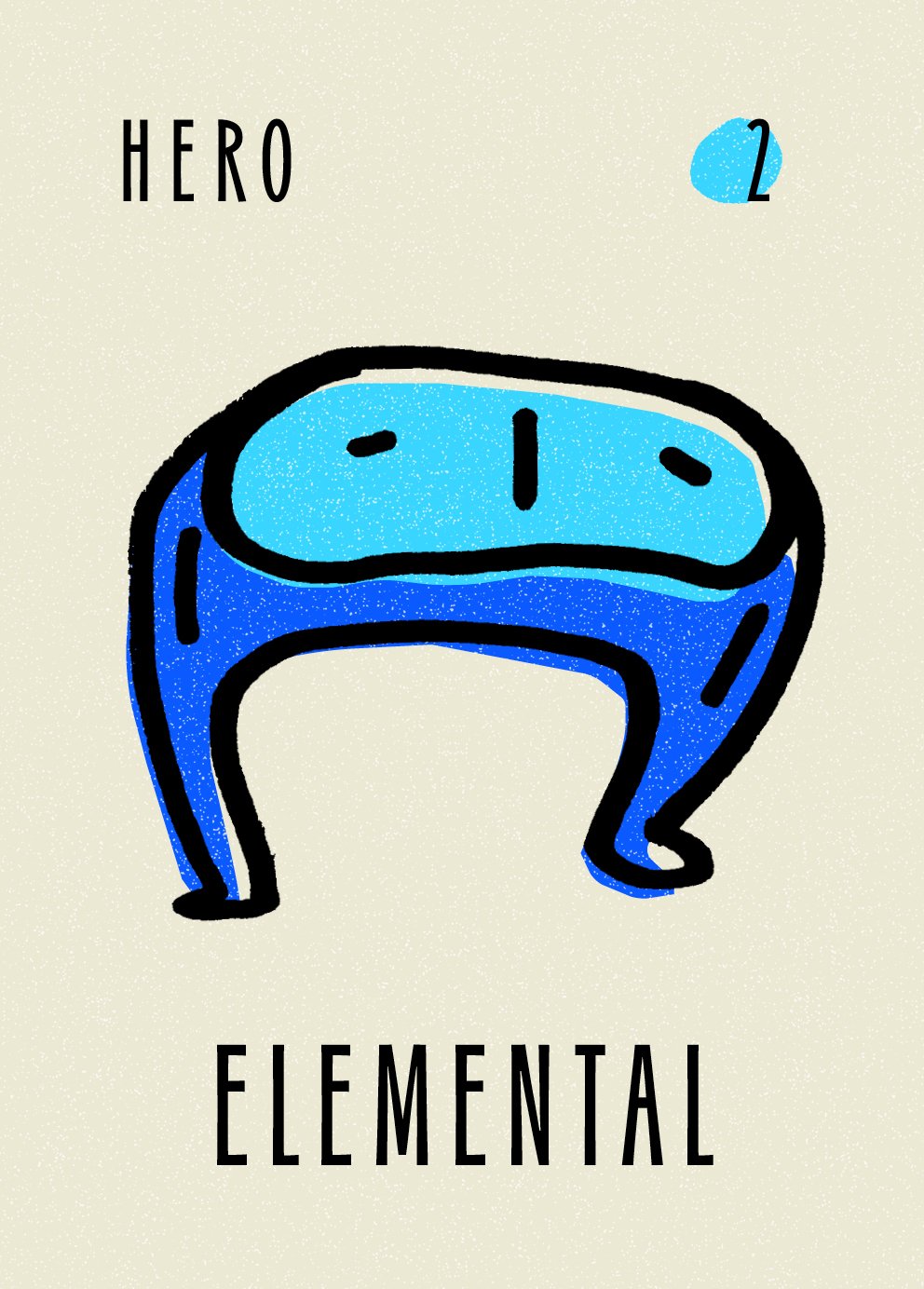
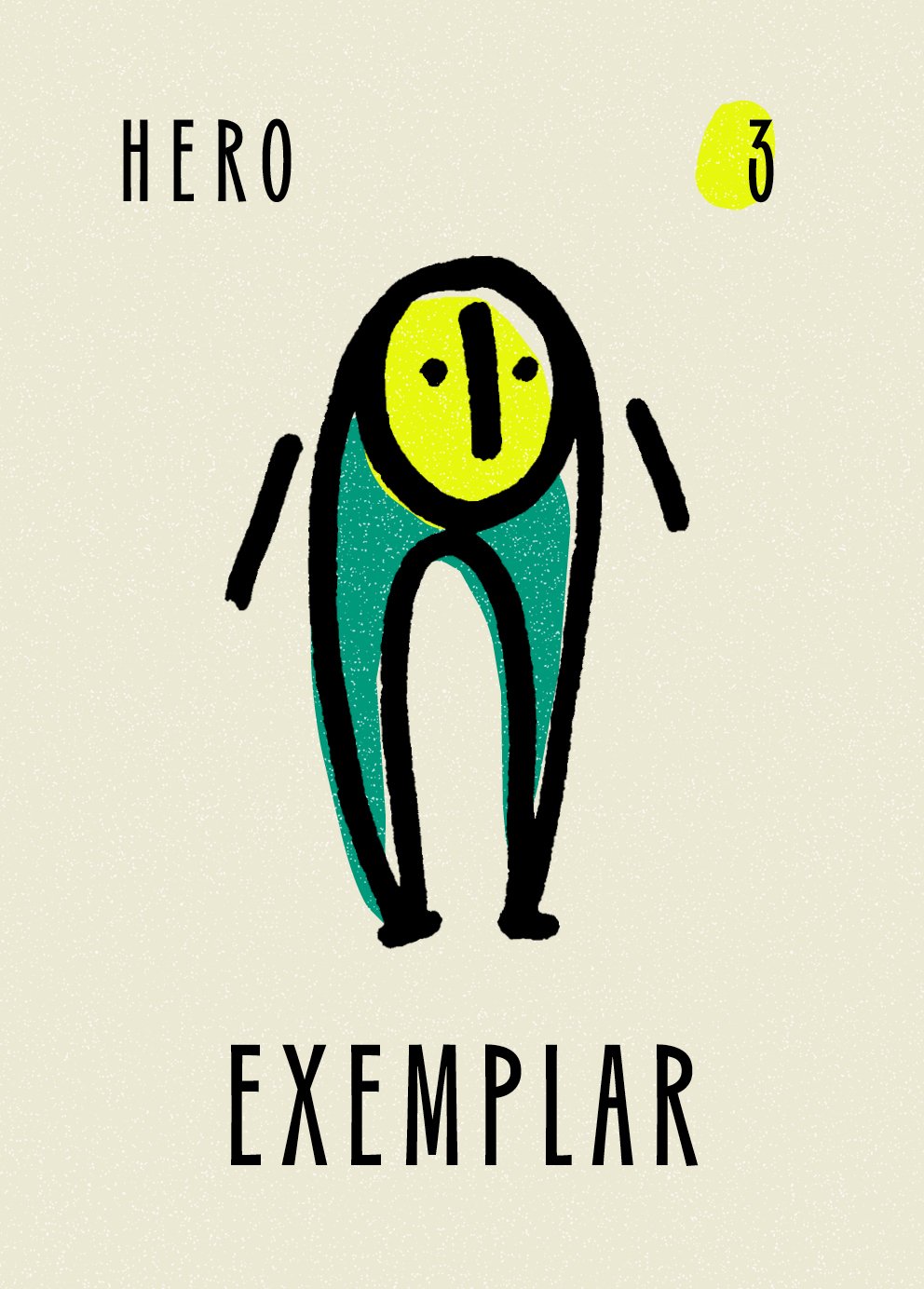

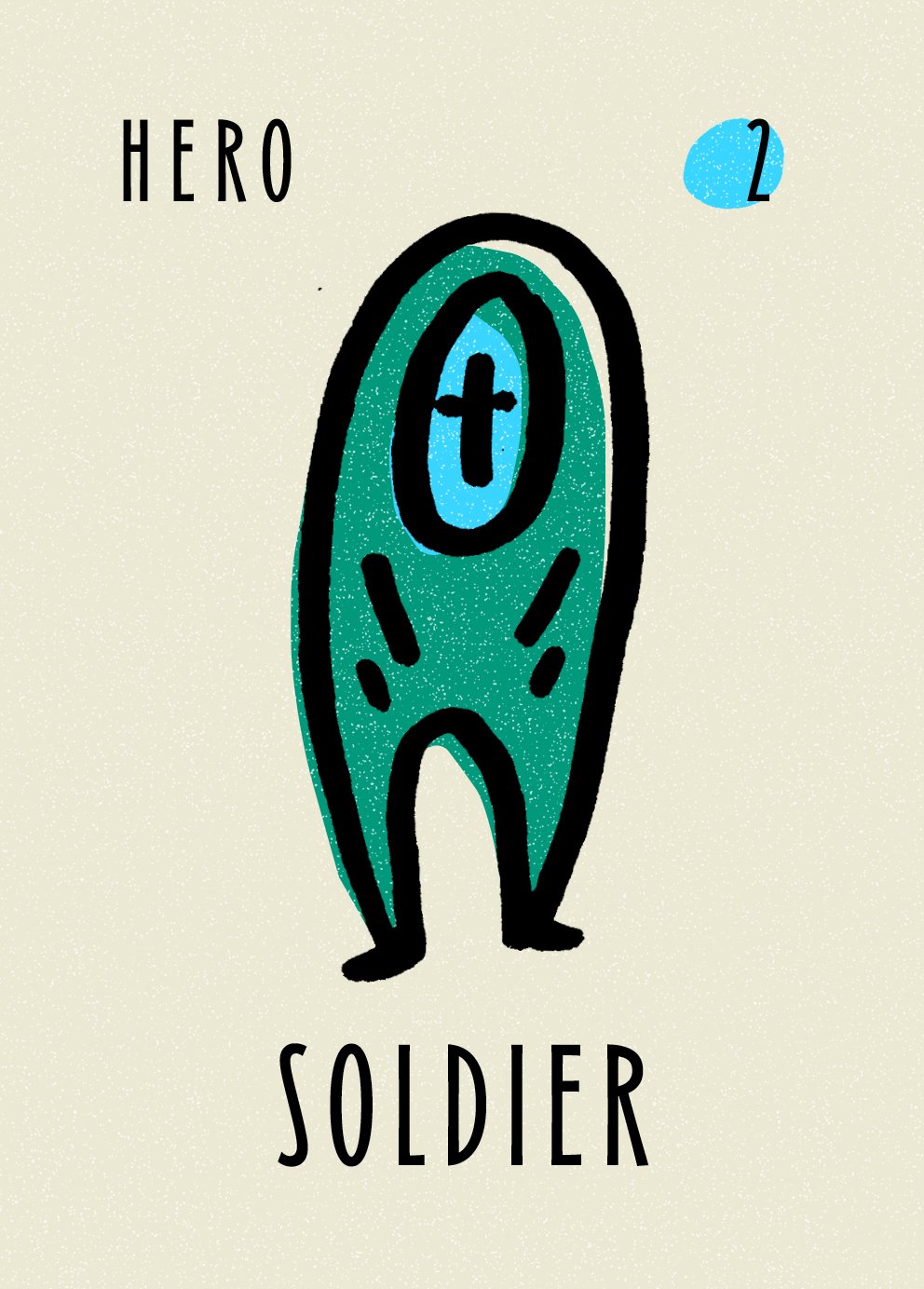

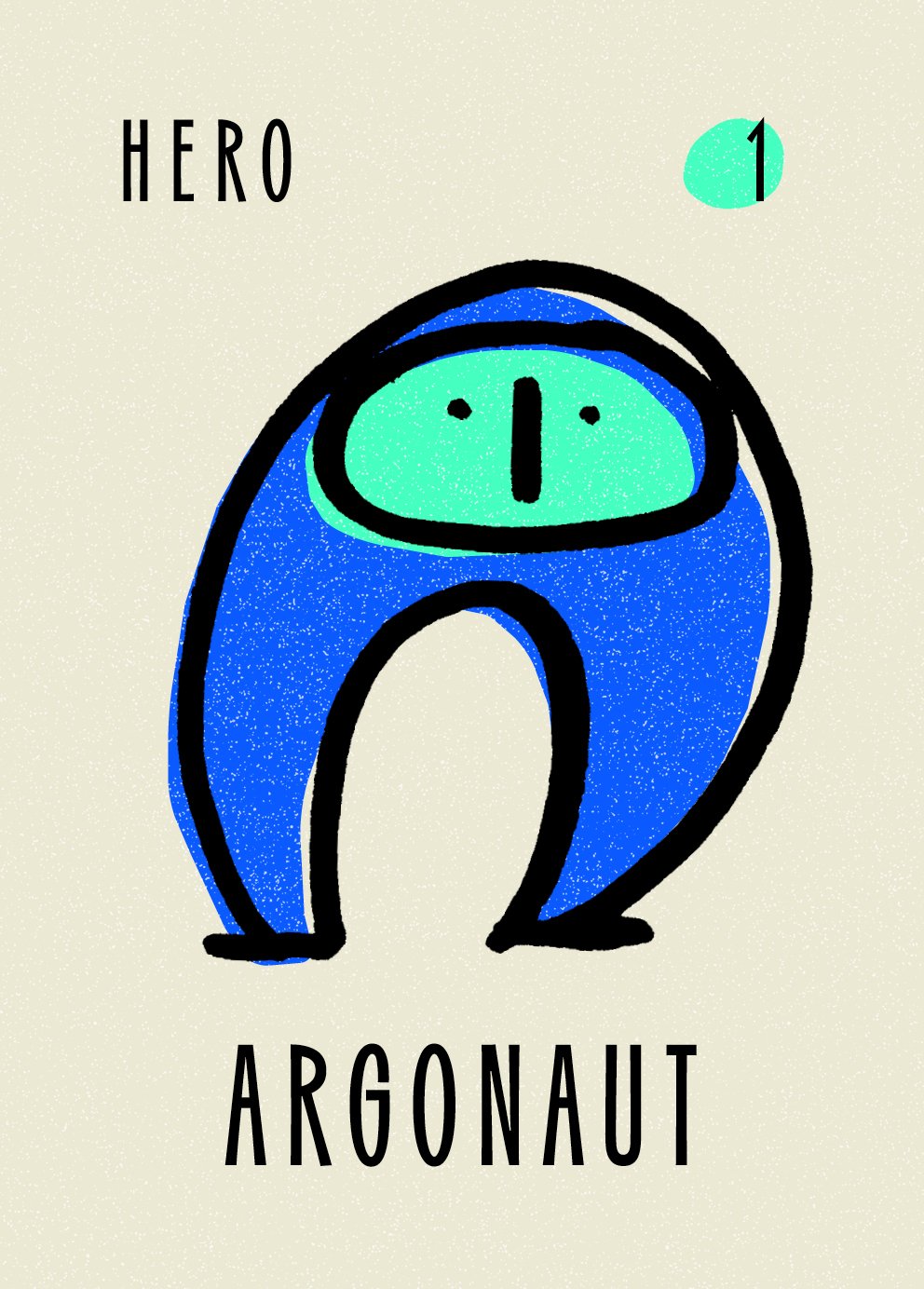

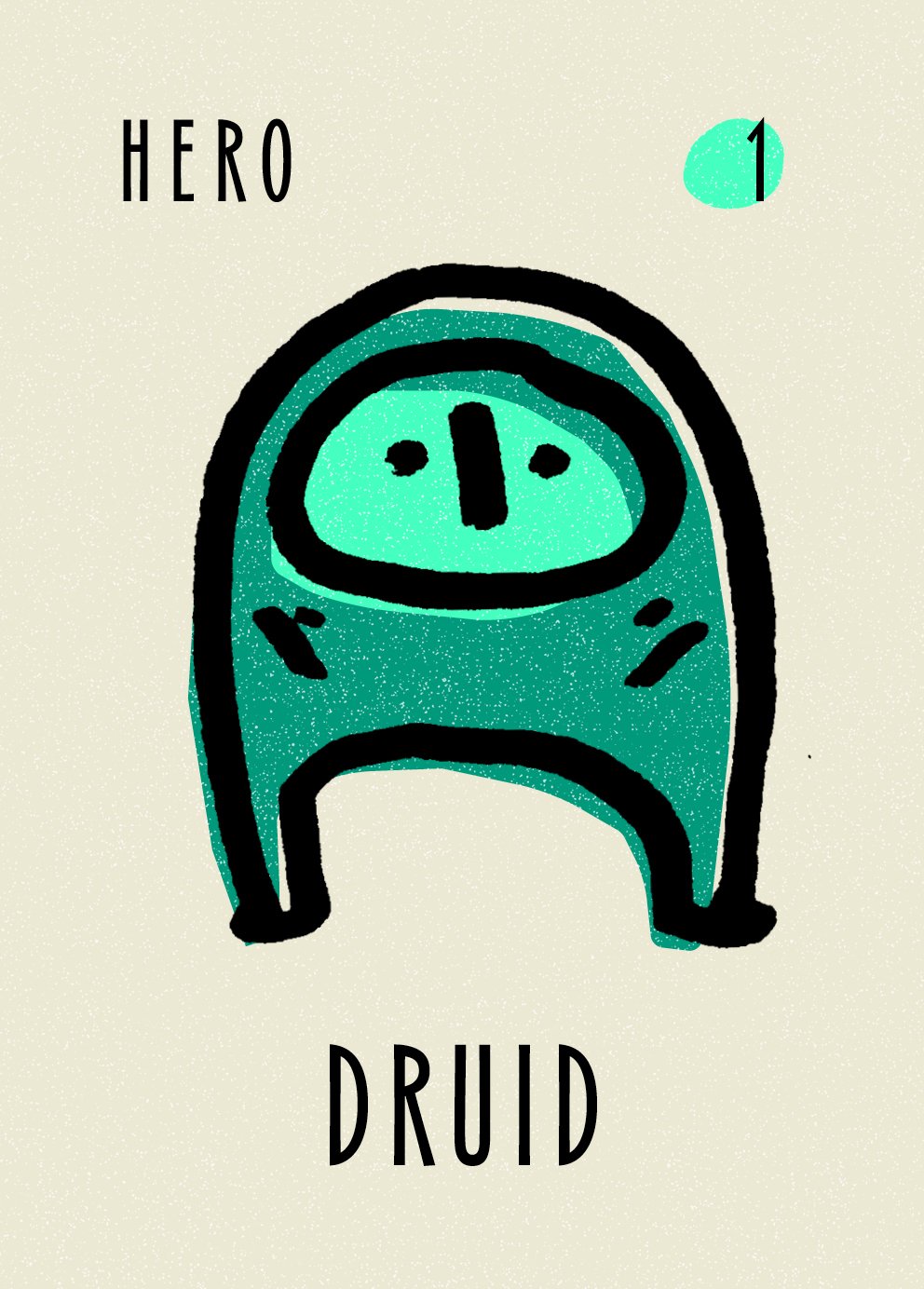
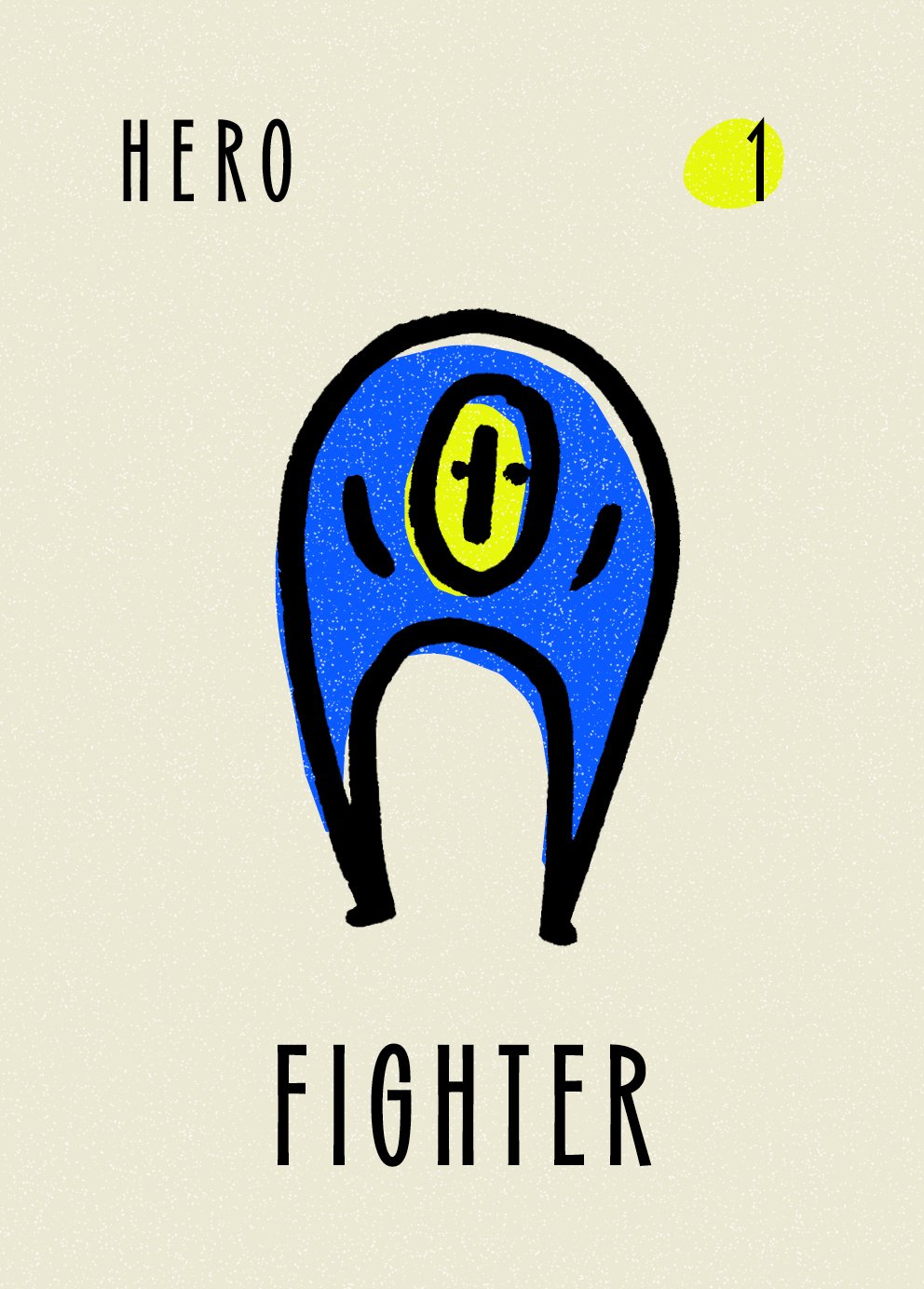
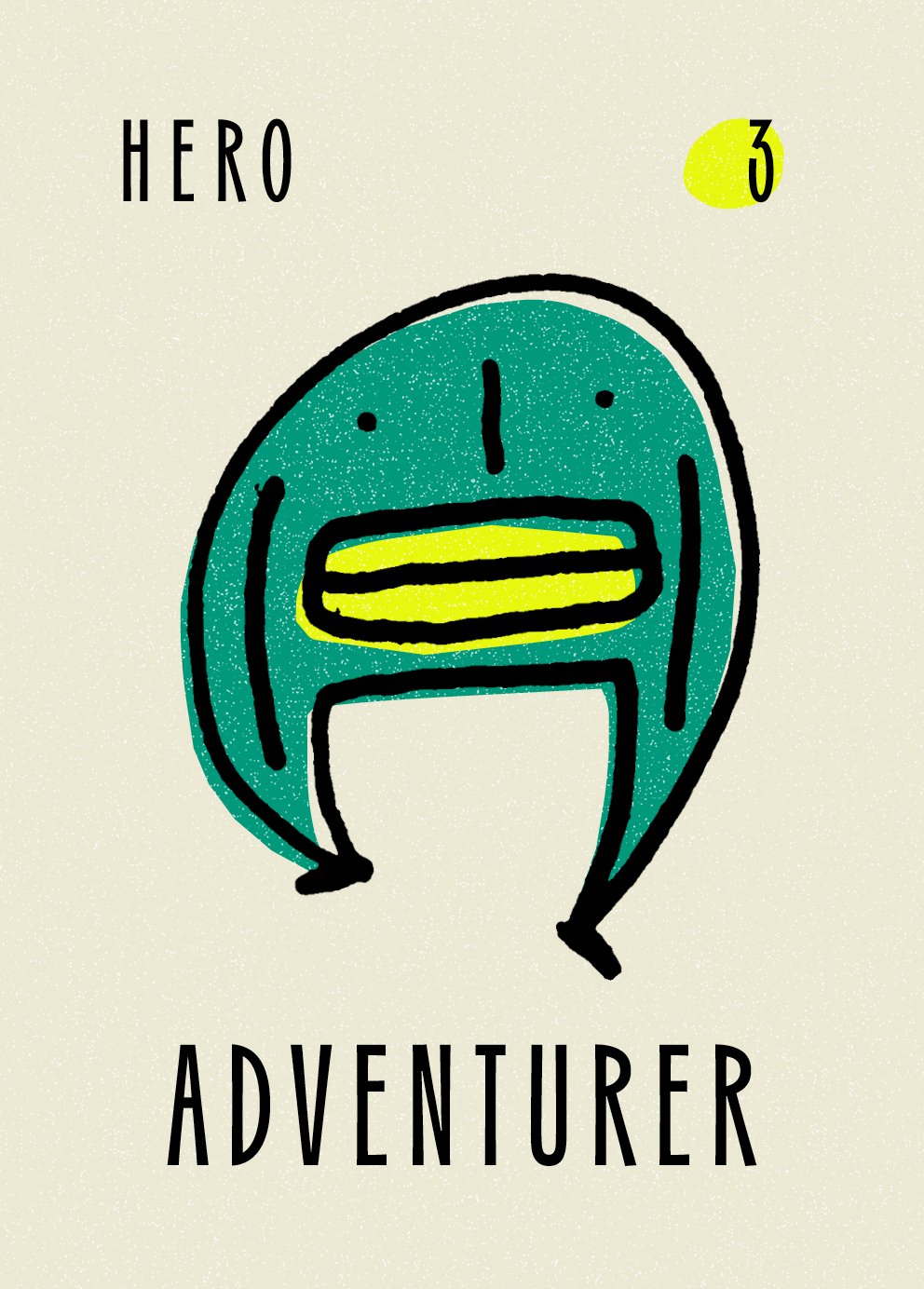
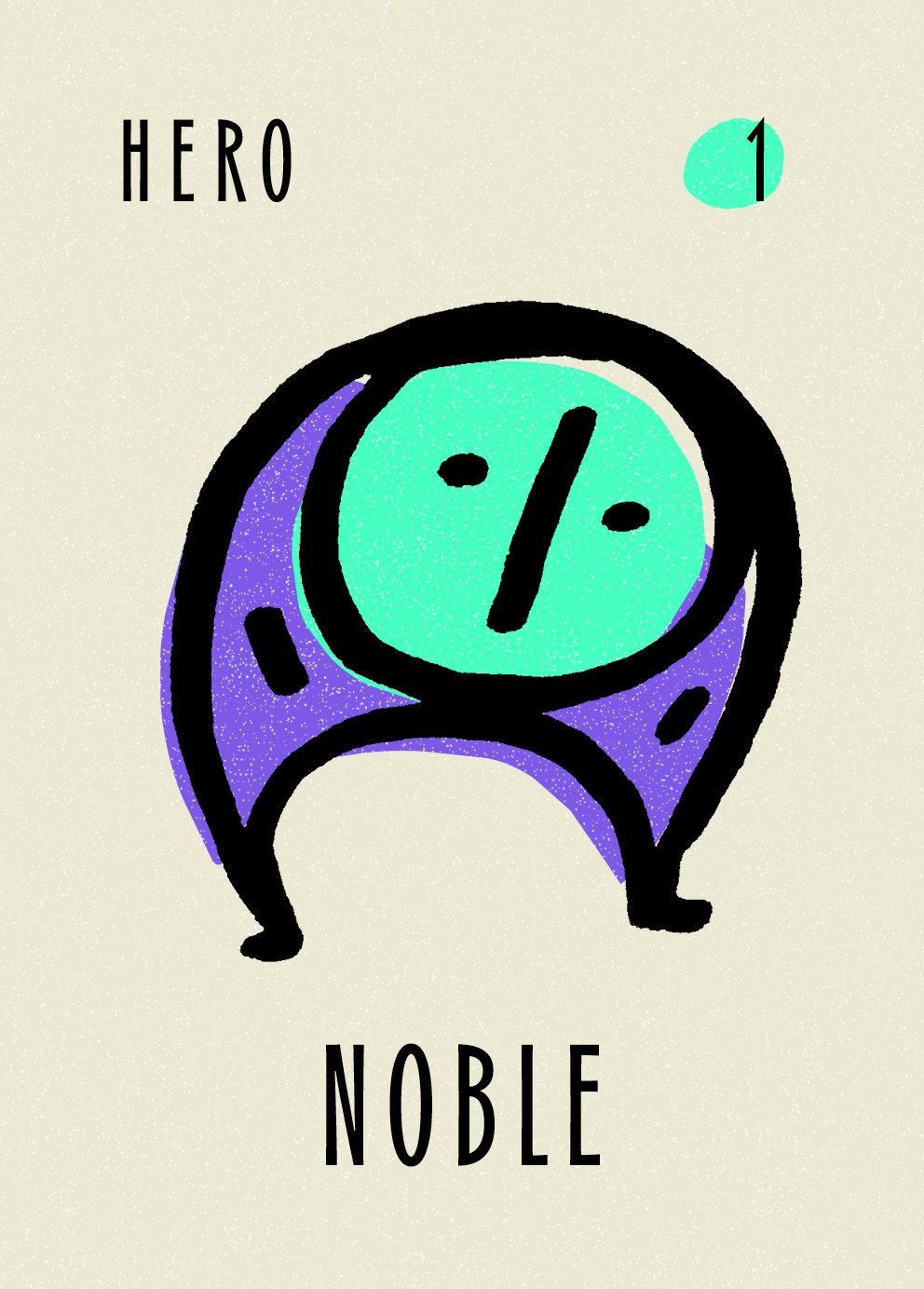
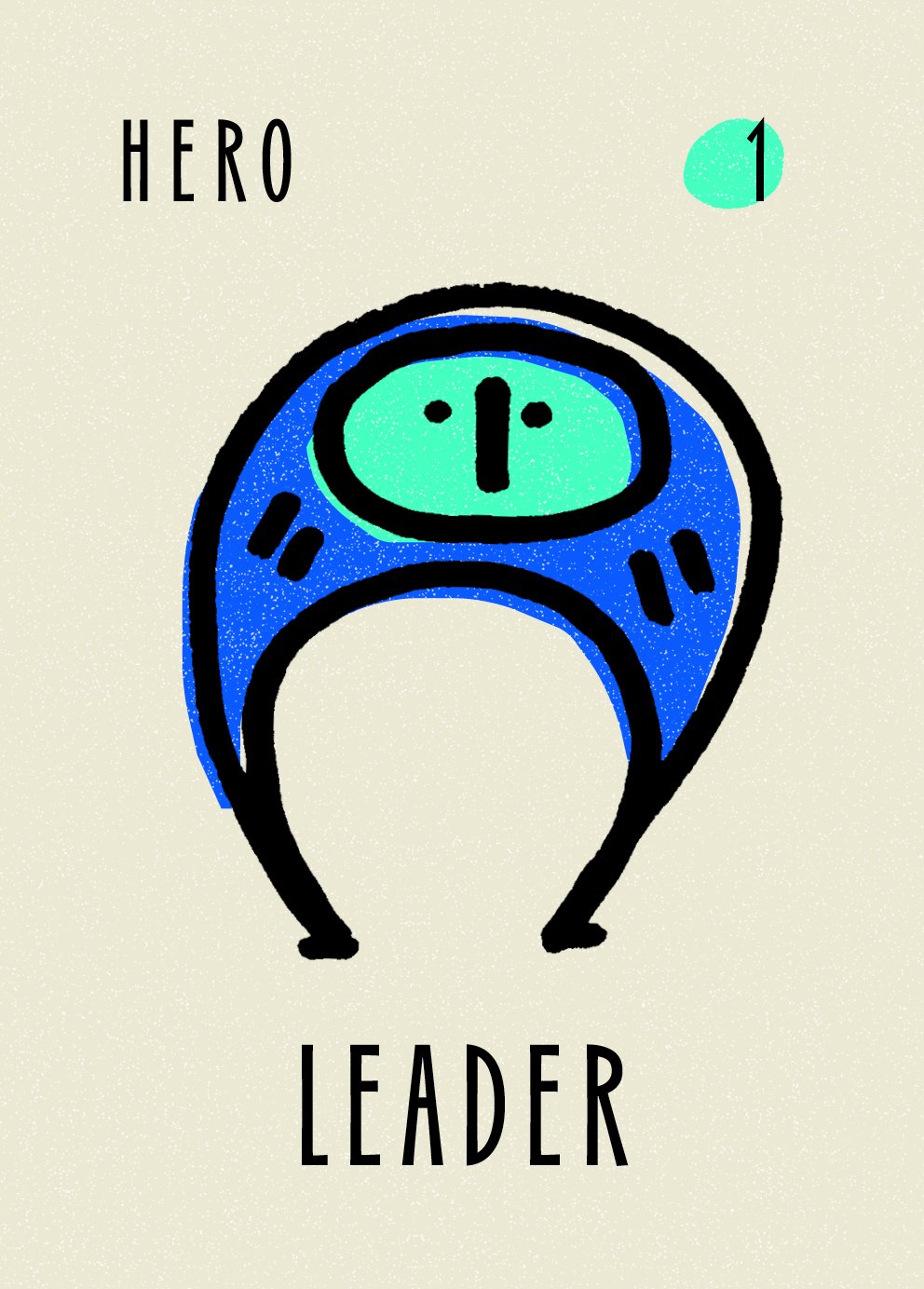
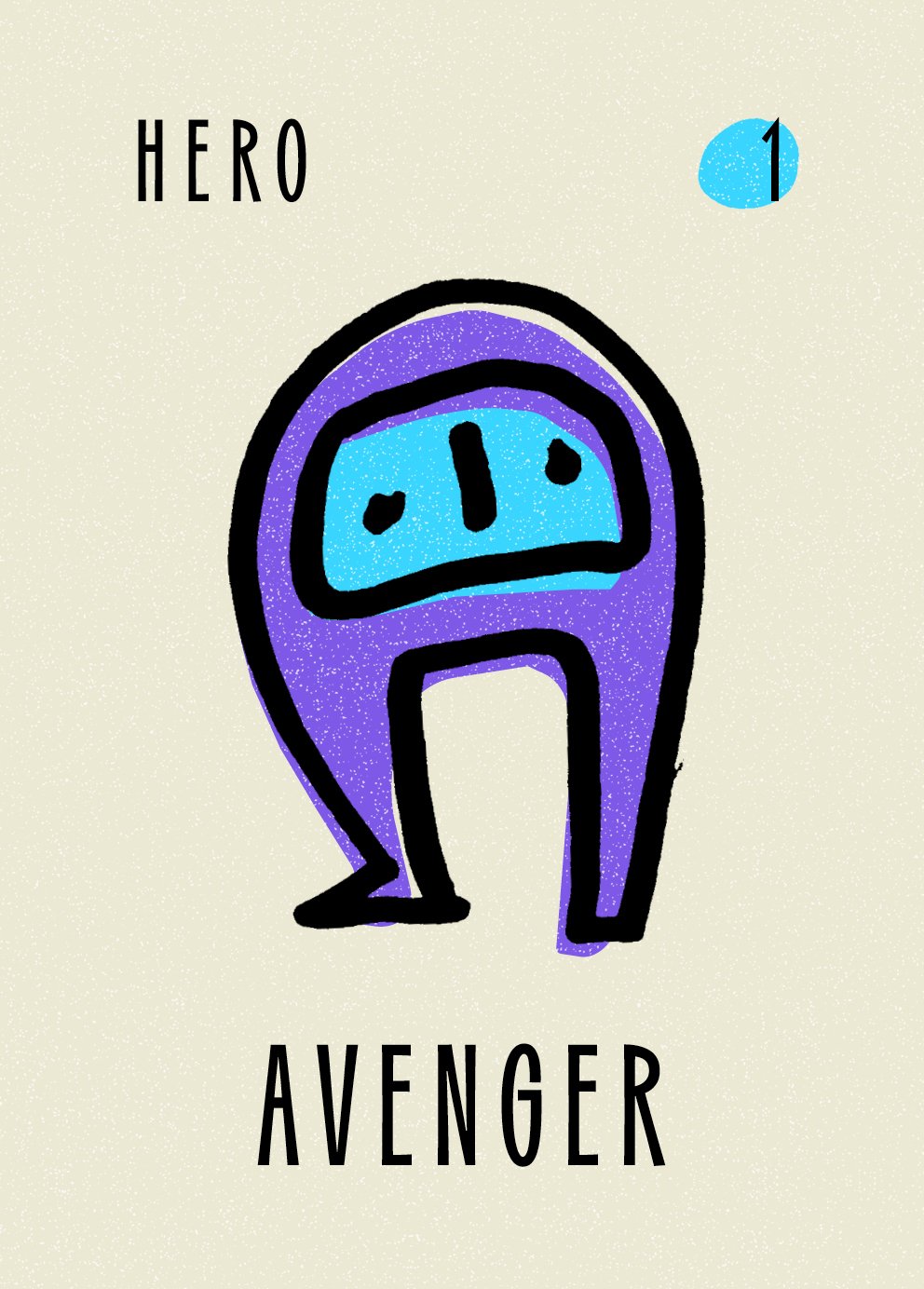
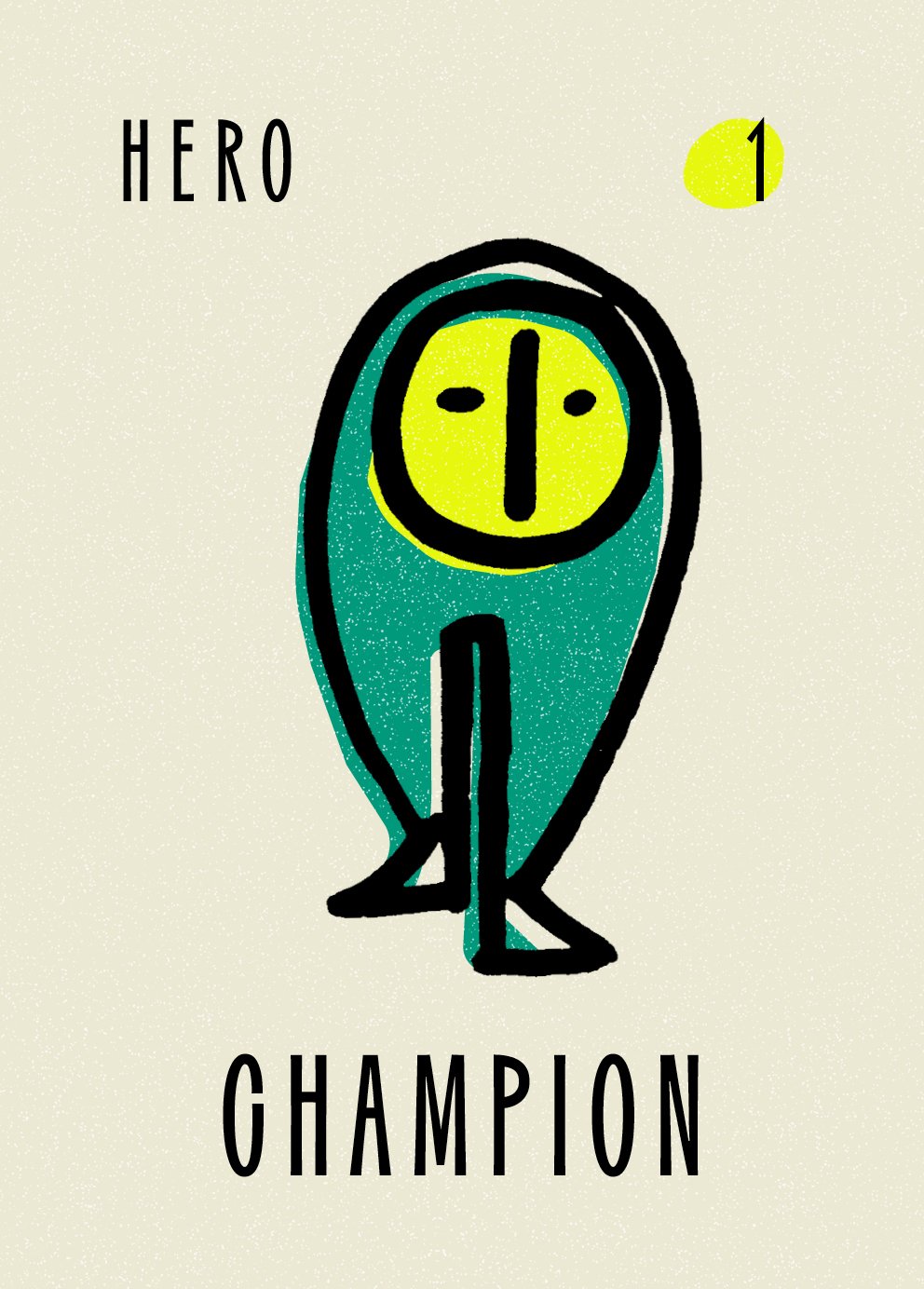
Monsters
After designing the heroes, it was time to design their nemeses. When approaching the monster designs, it was important that they feel like they are a part of the same world as the heroes but, are also distinctly different from the heroes. I decided that the monsters would have the same level of detail as the heroes, but where the heroes are more naturally curved the monsters would be angular. Also, certain monsters would have extra features such as legs or horns to add to their animalistic nature.
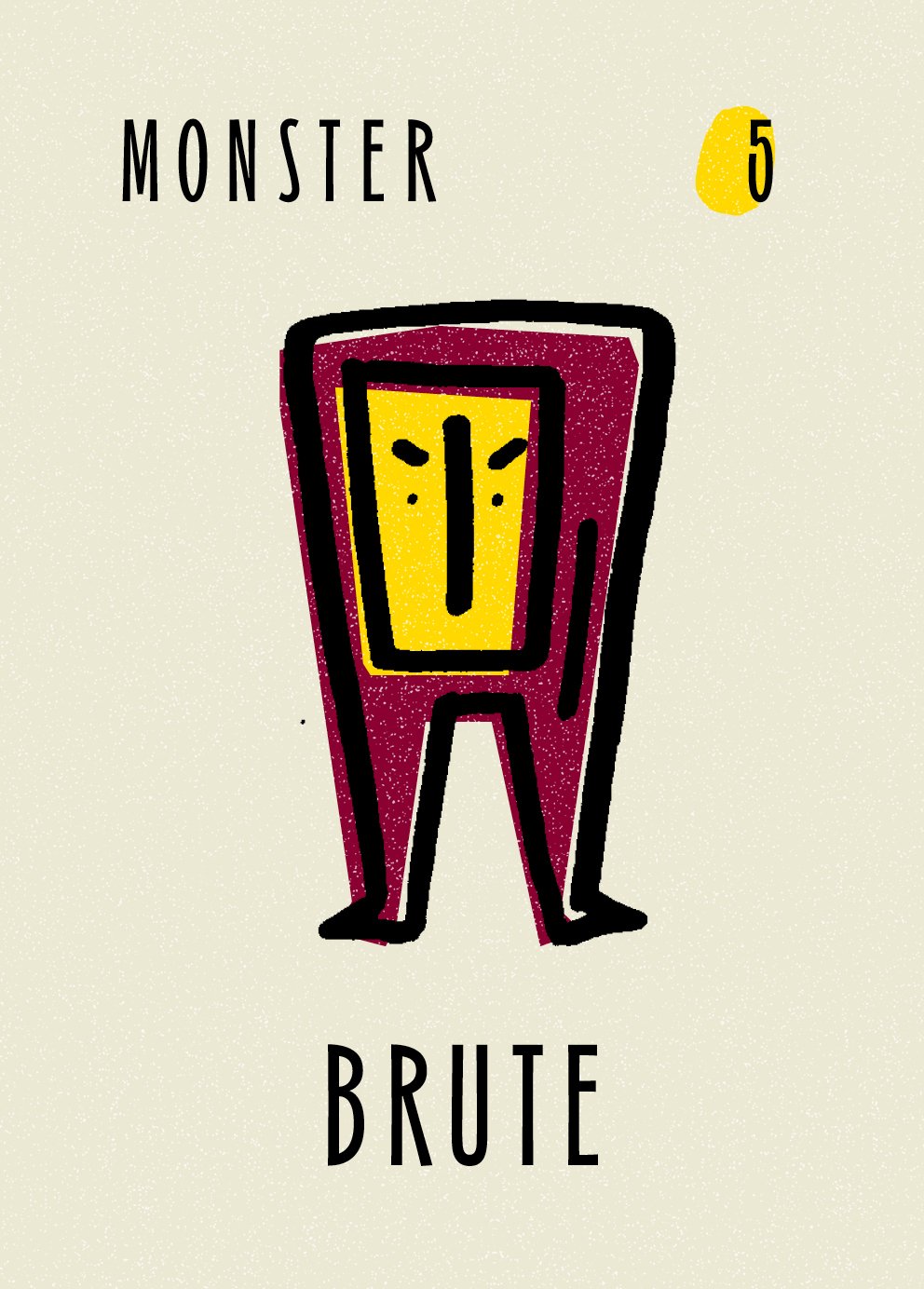

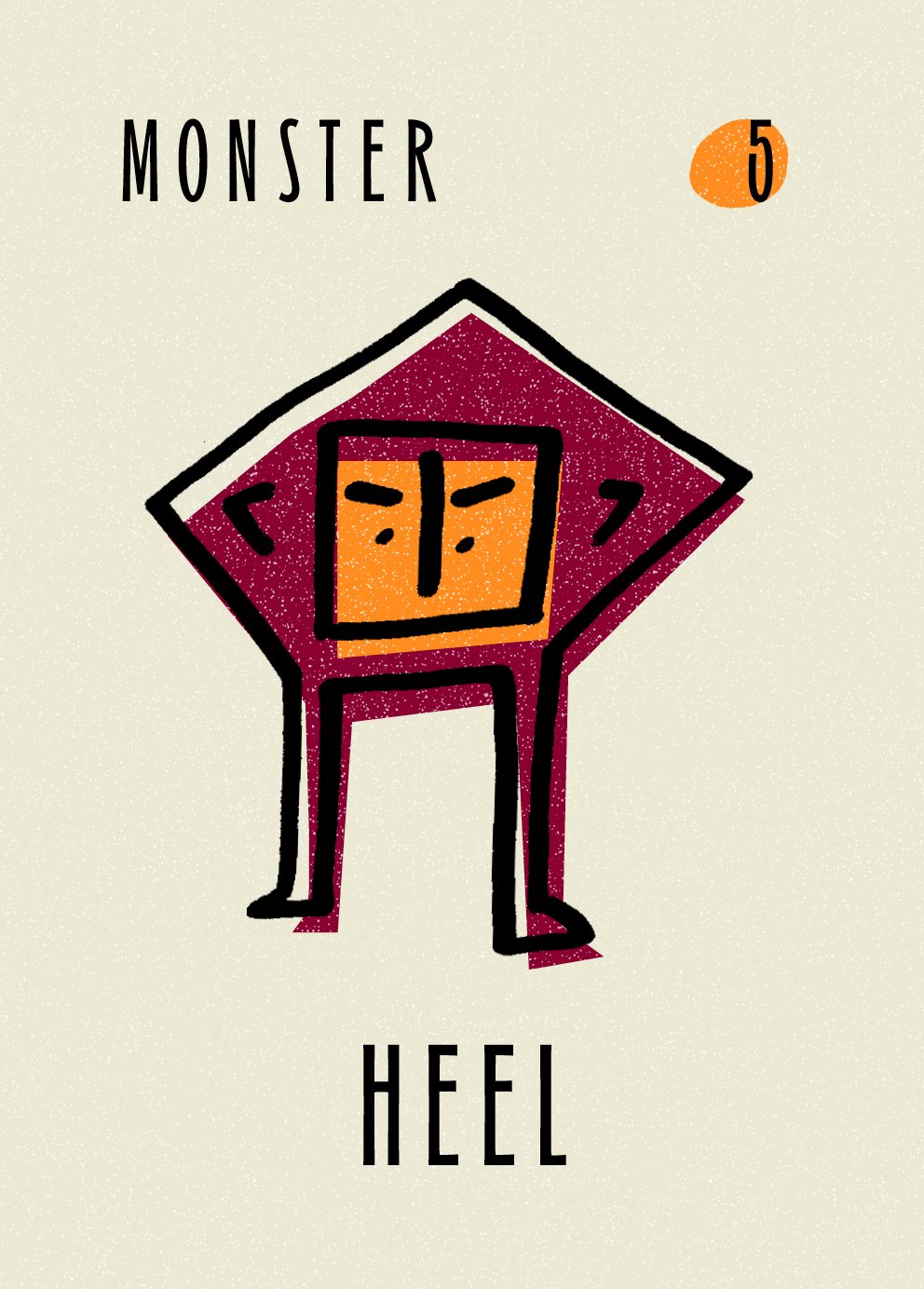

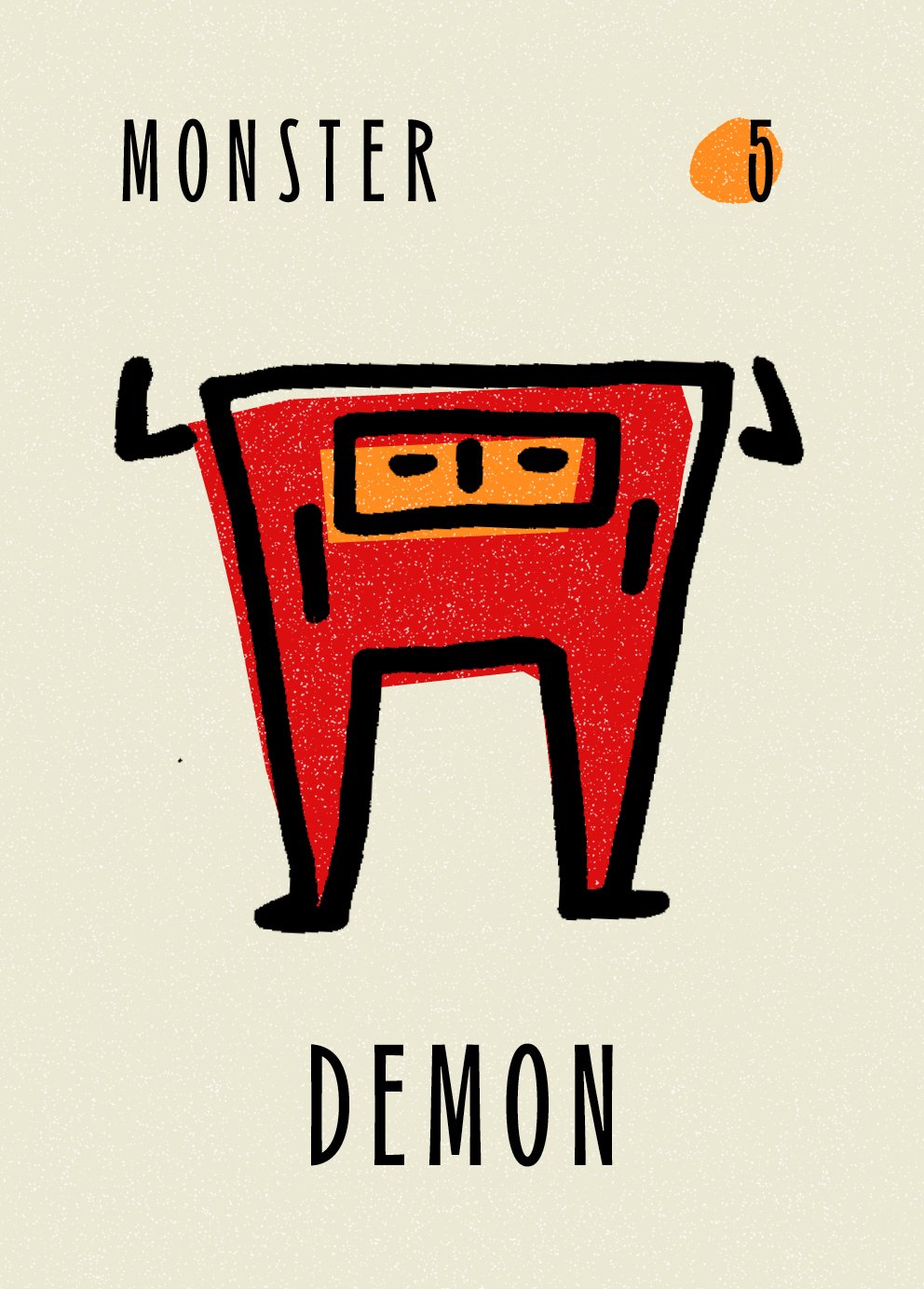

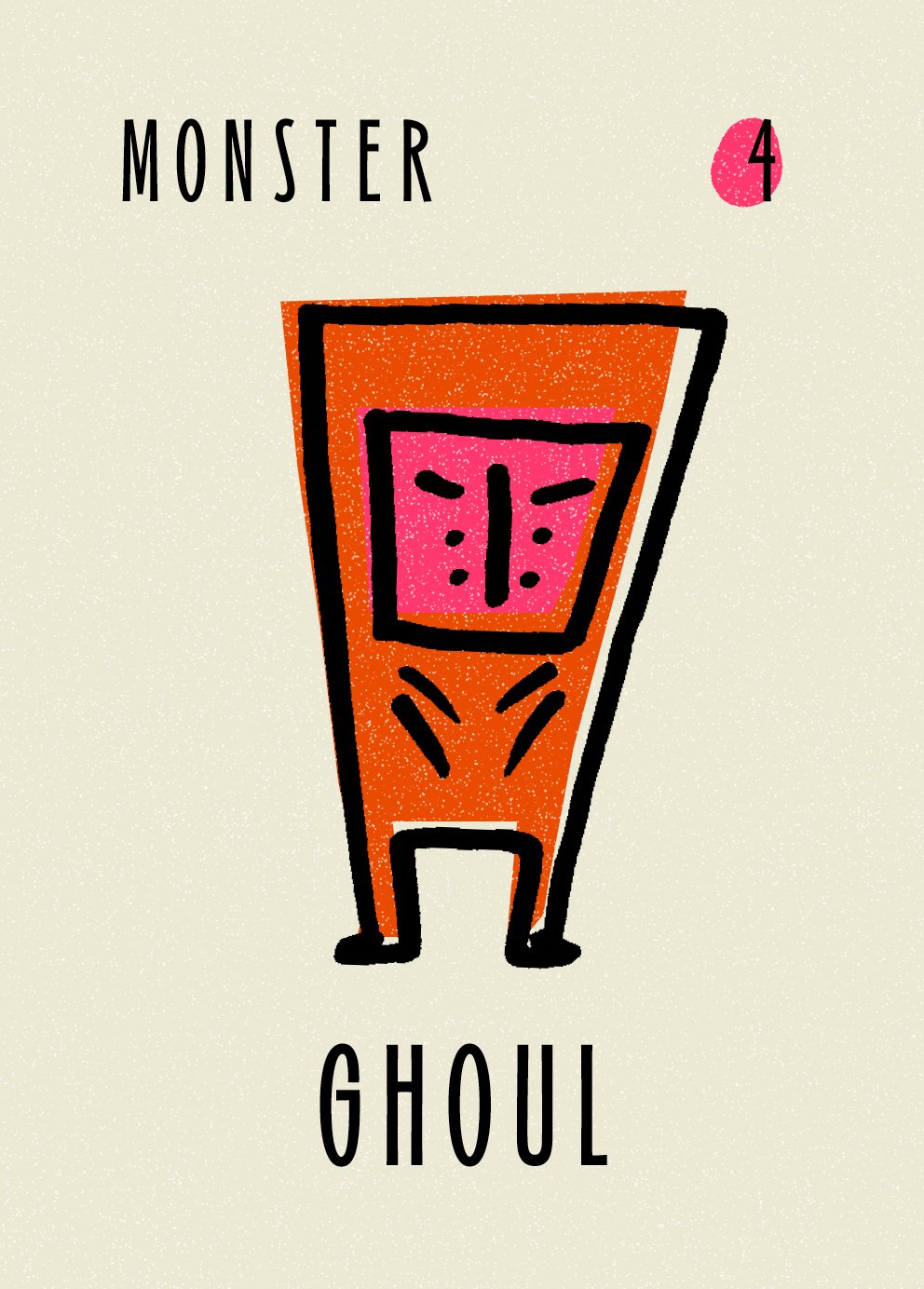
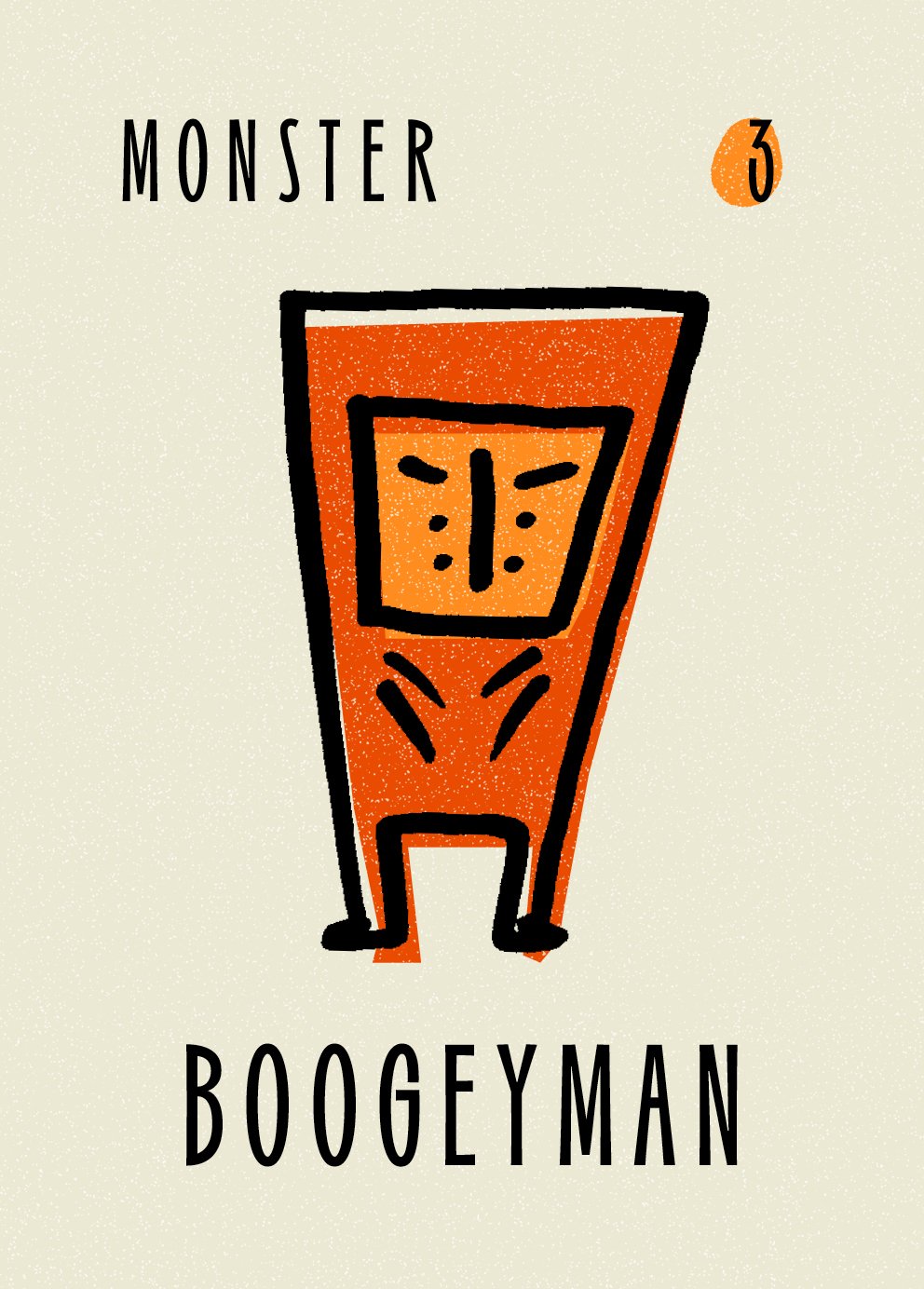
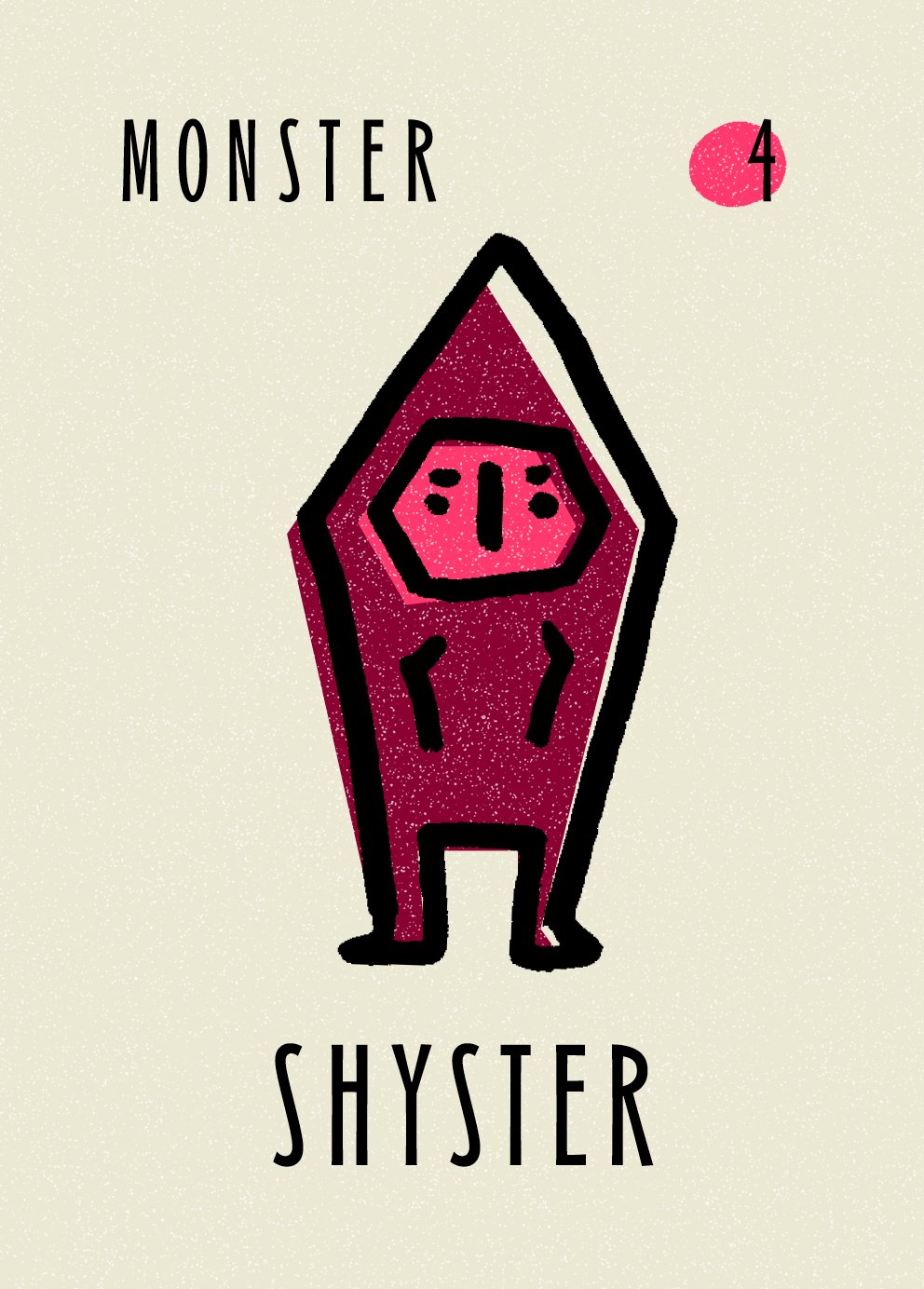
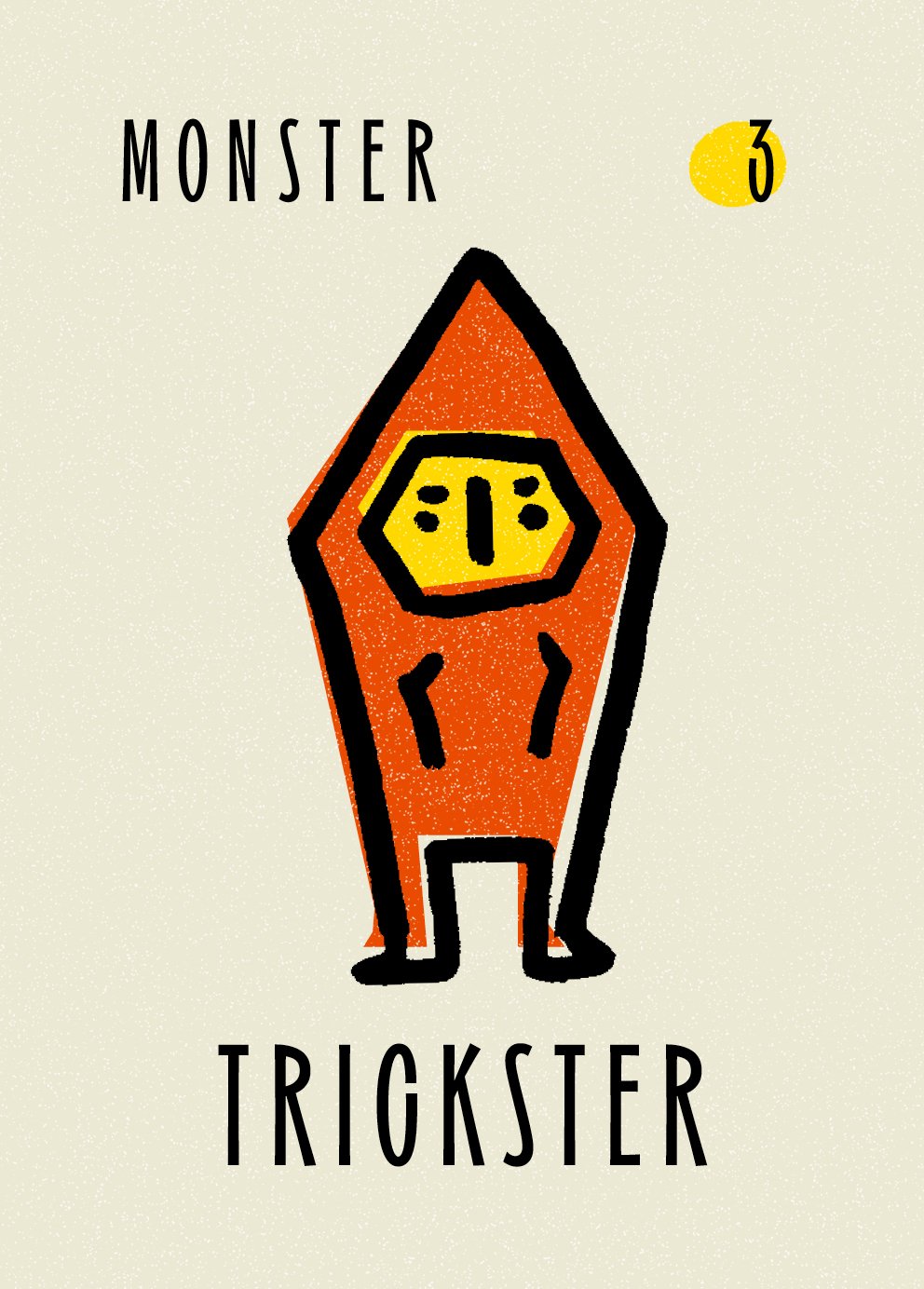
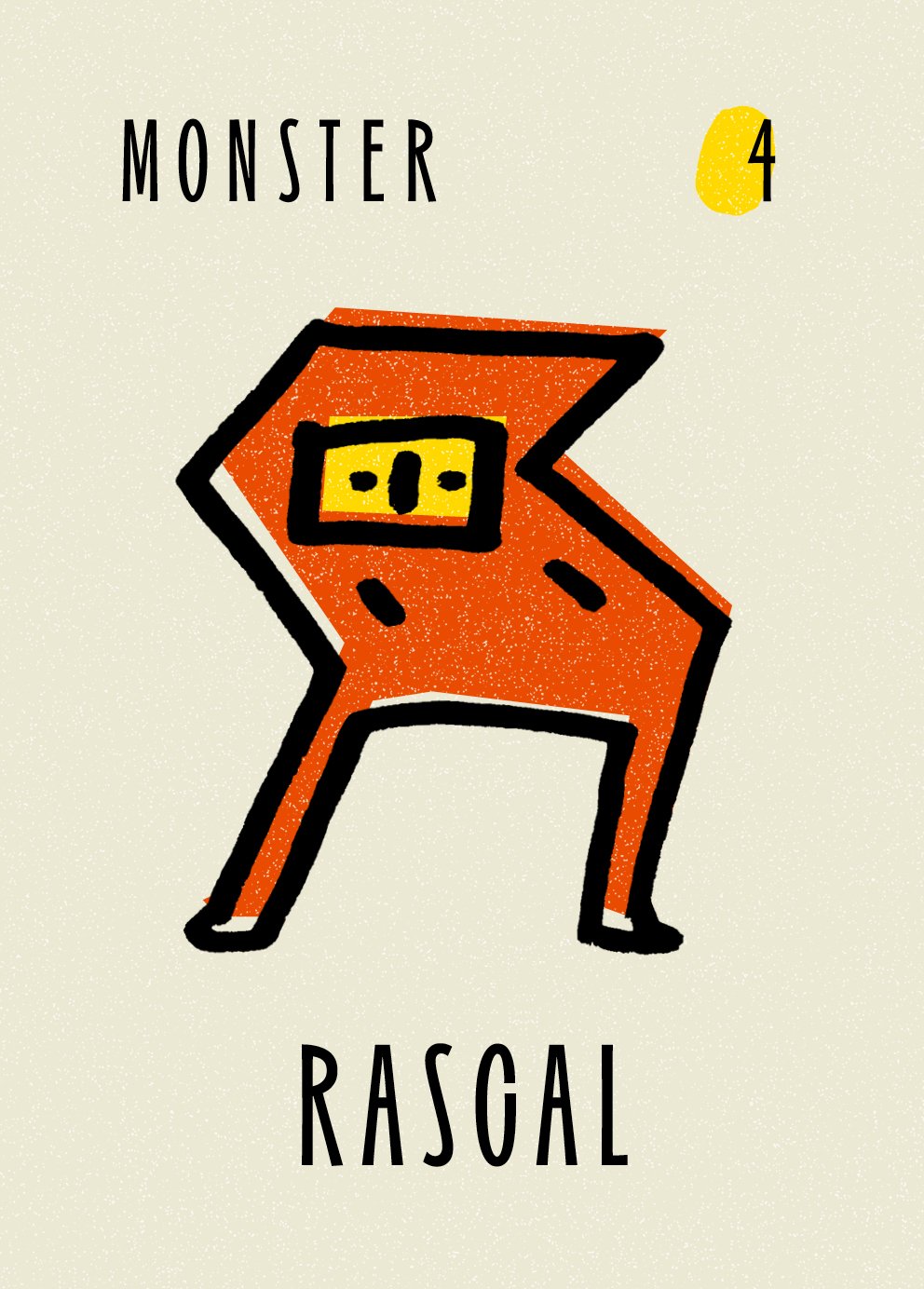
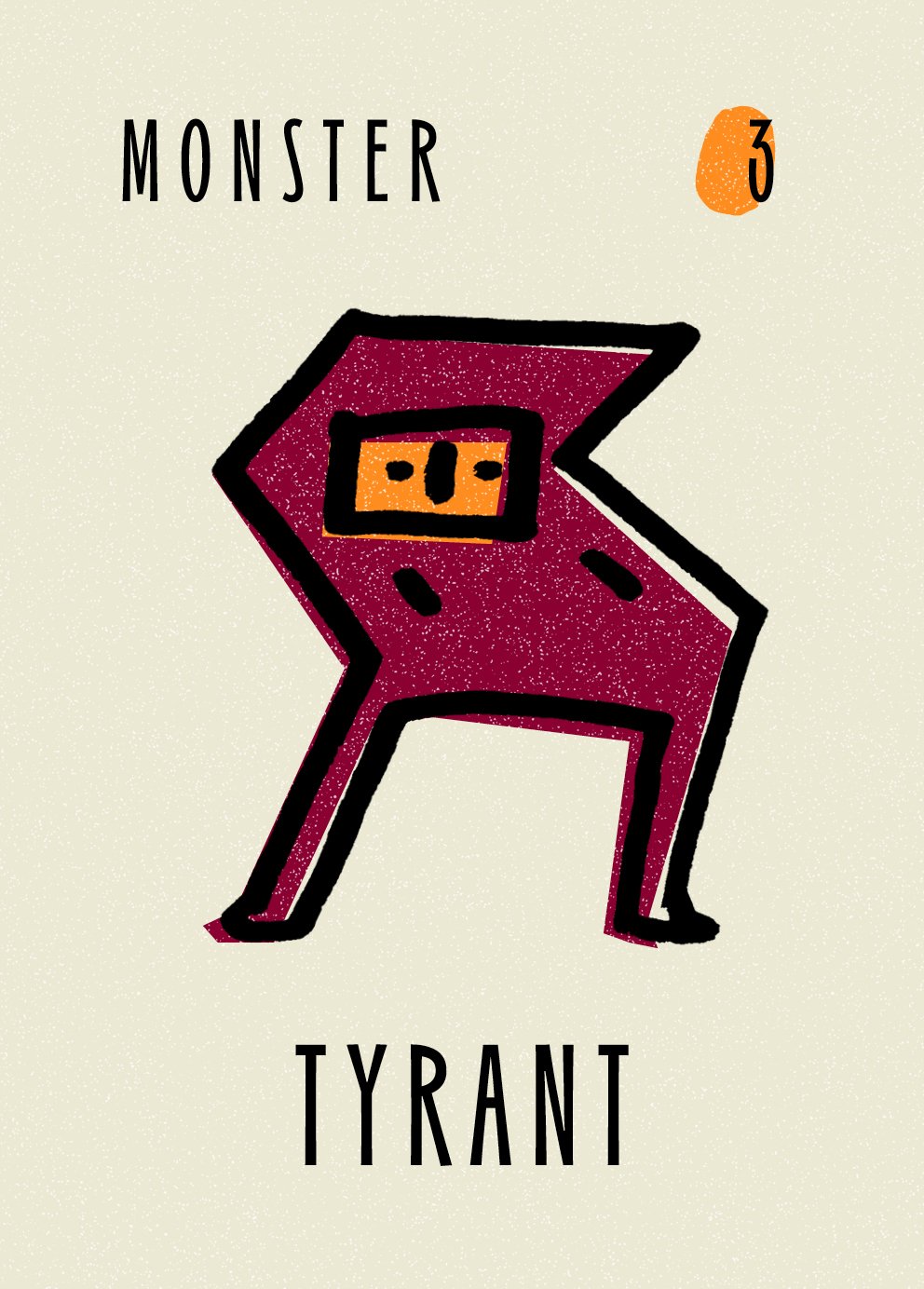
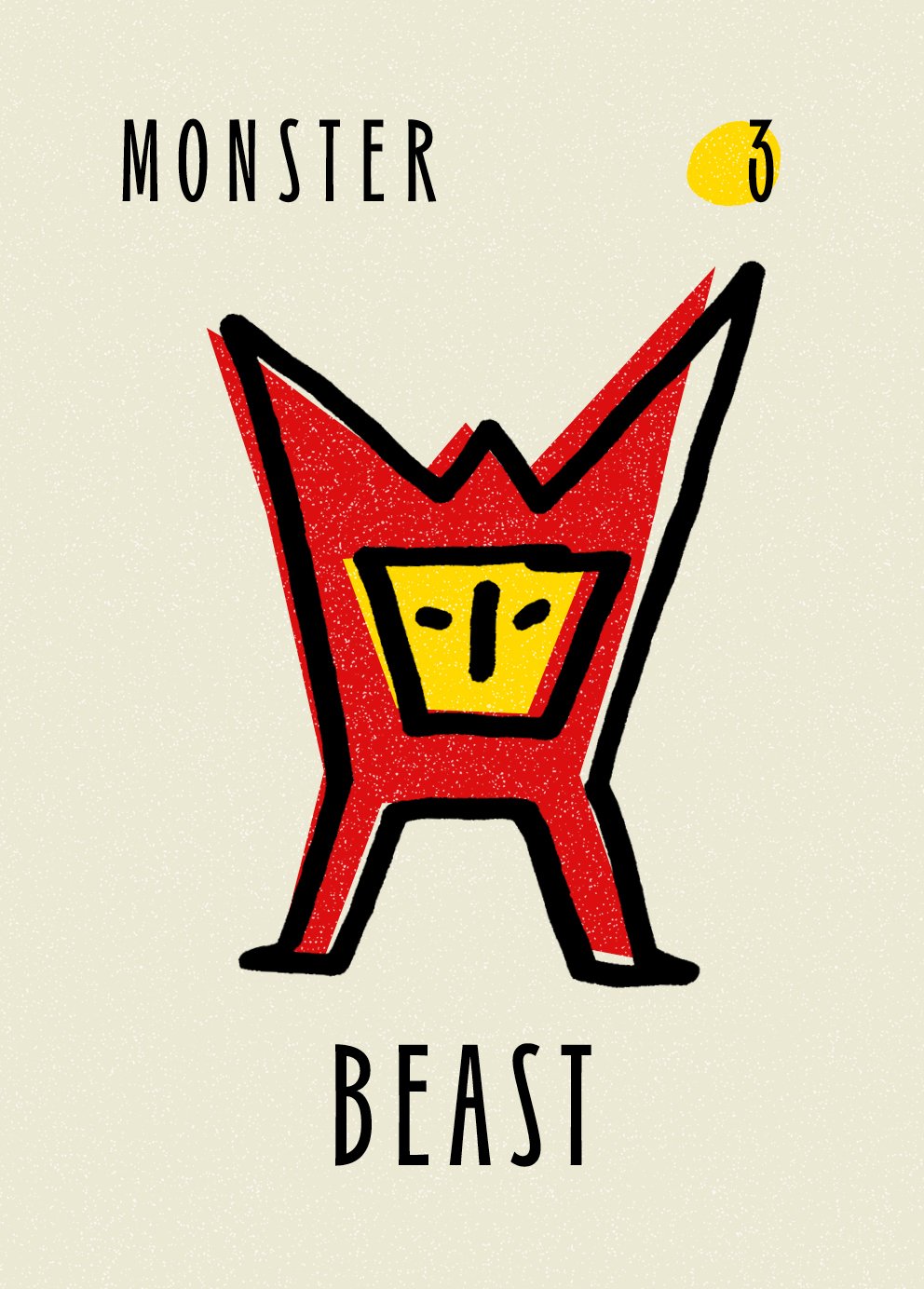
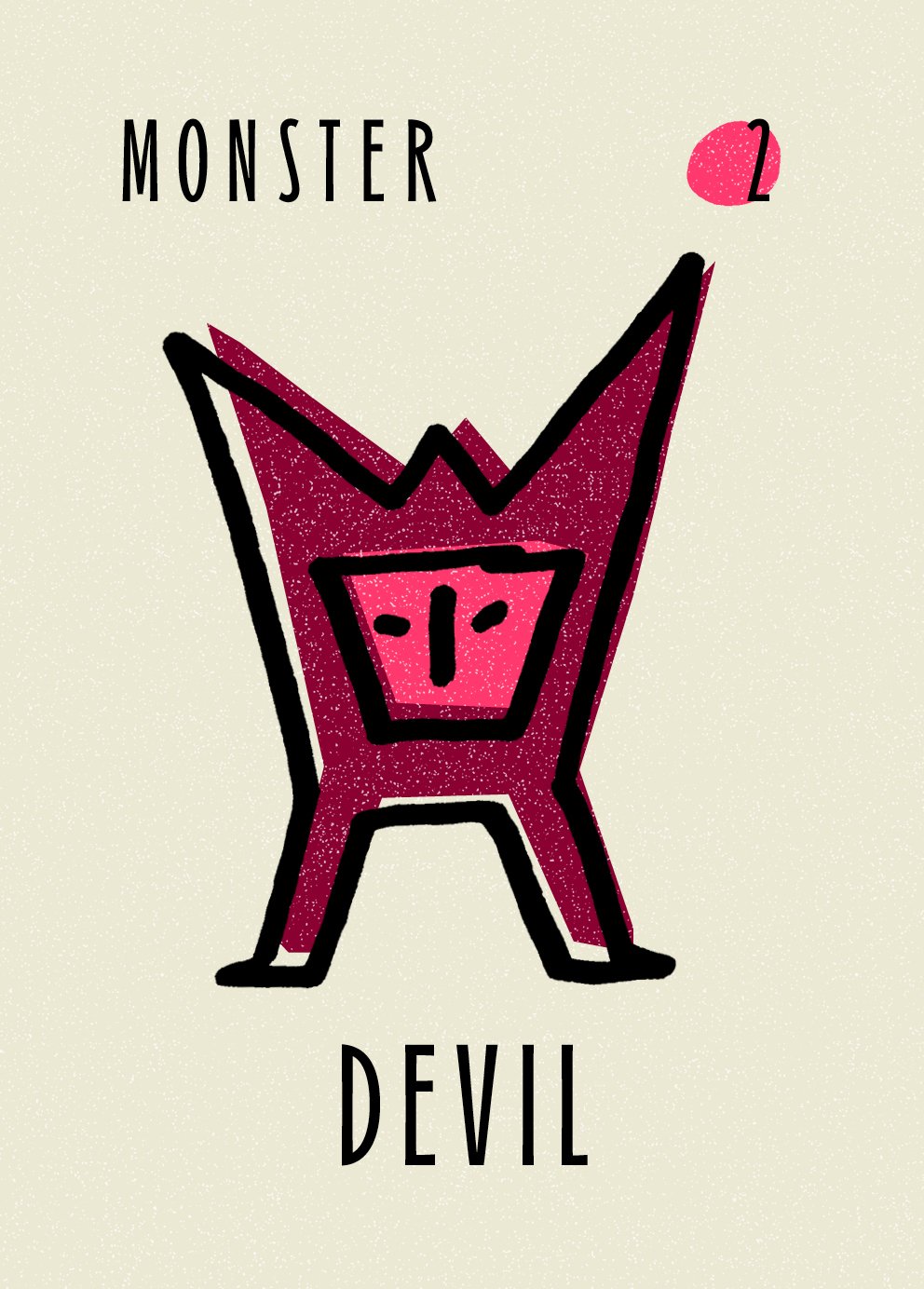
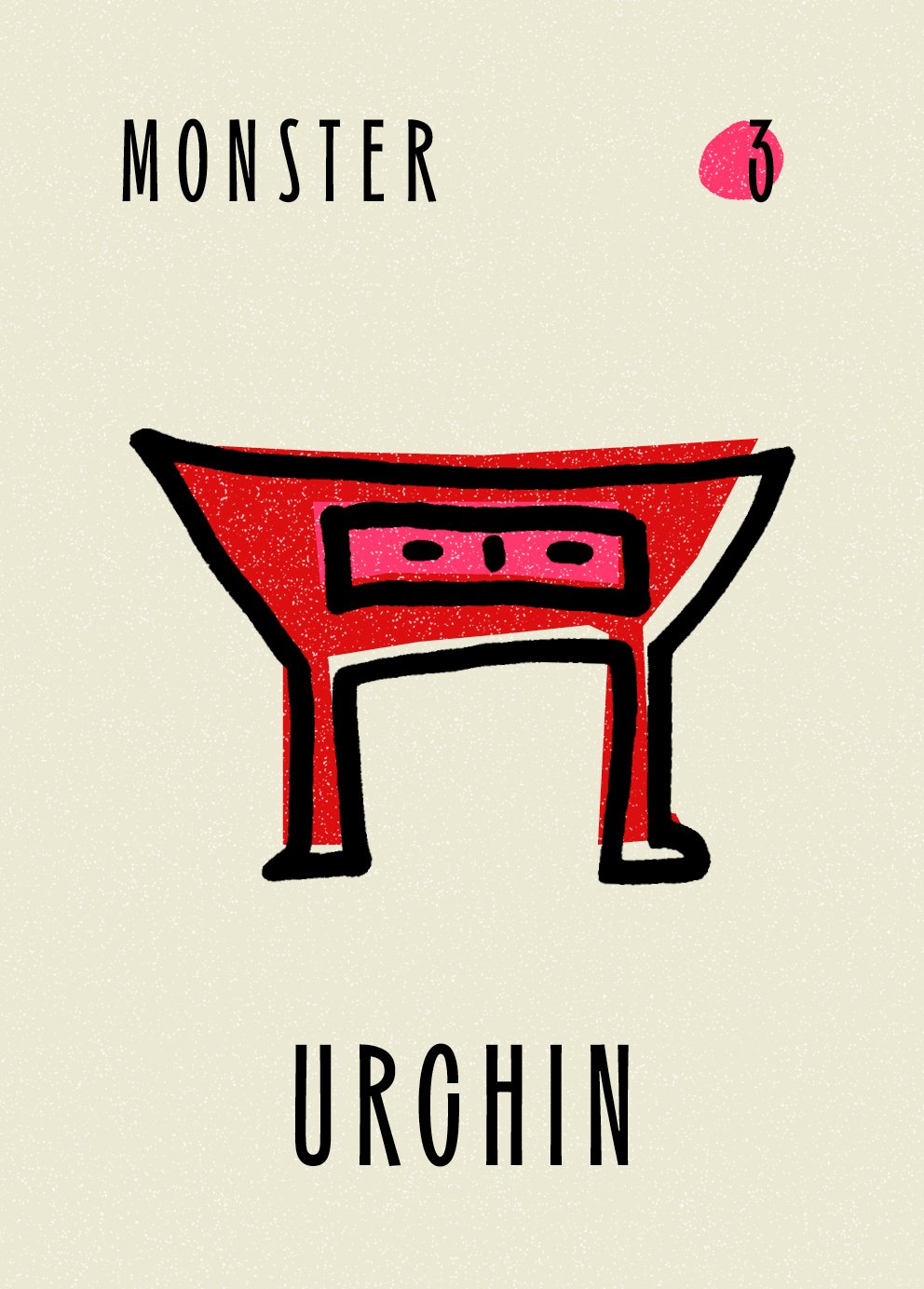
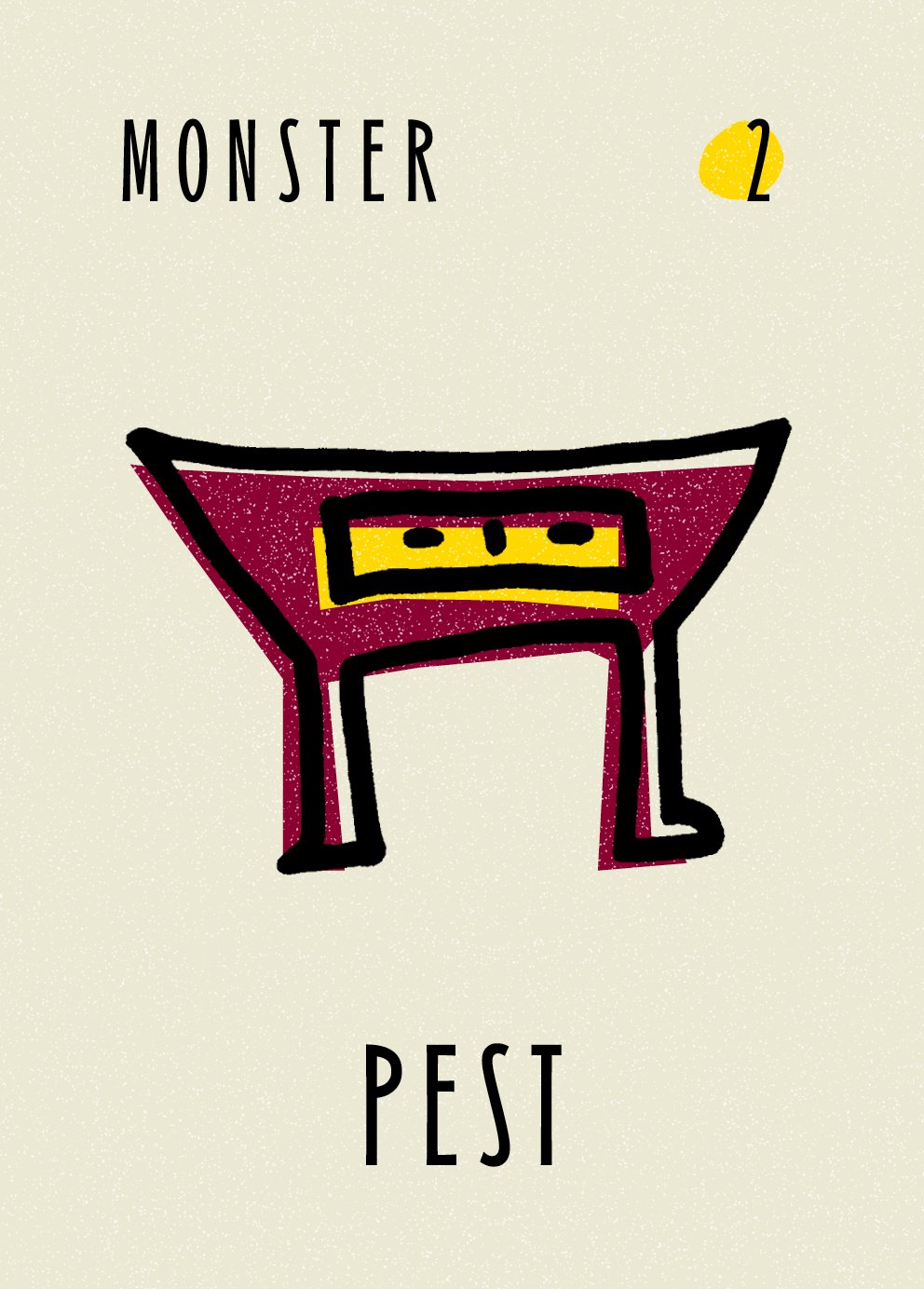
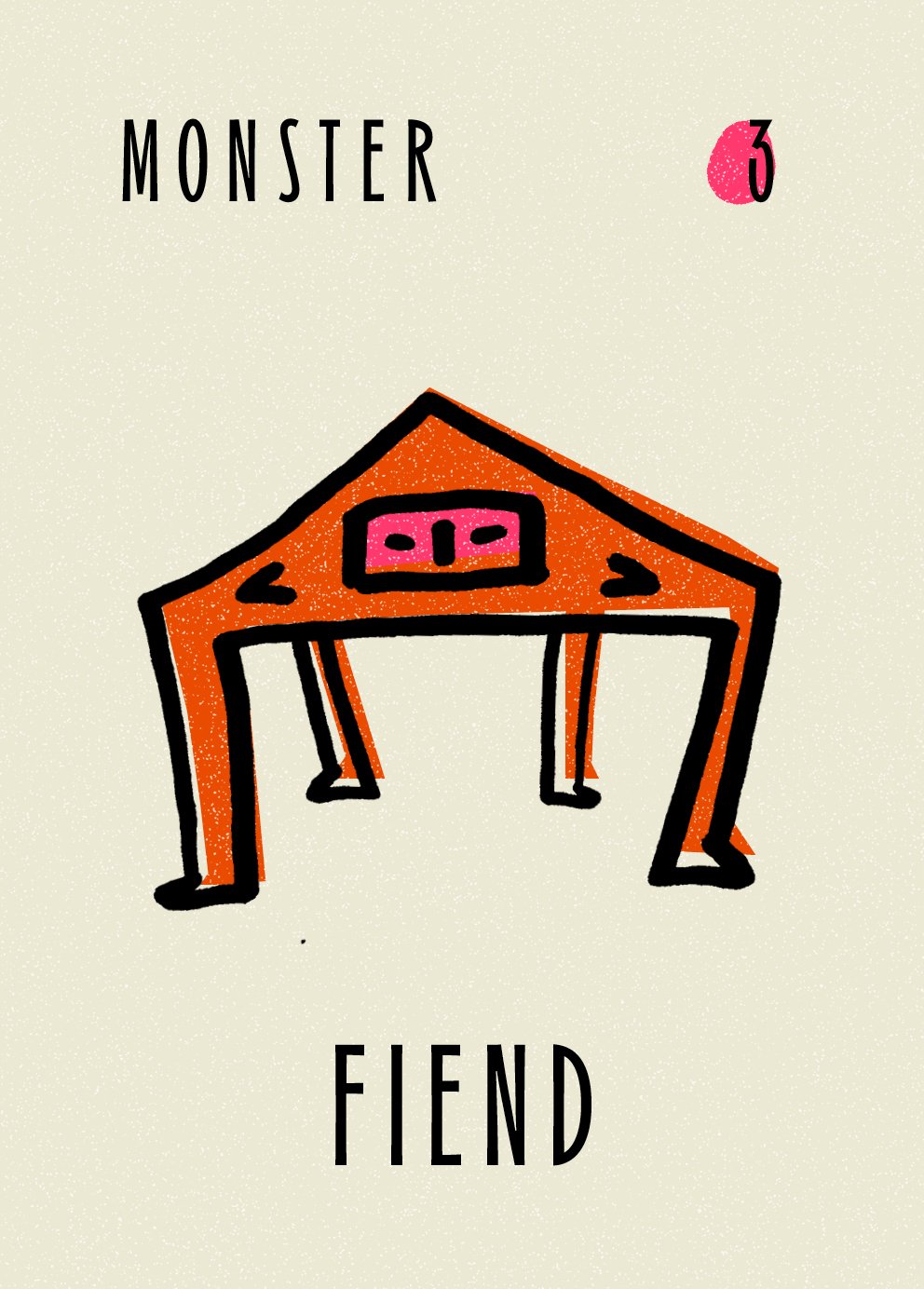
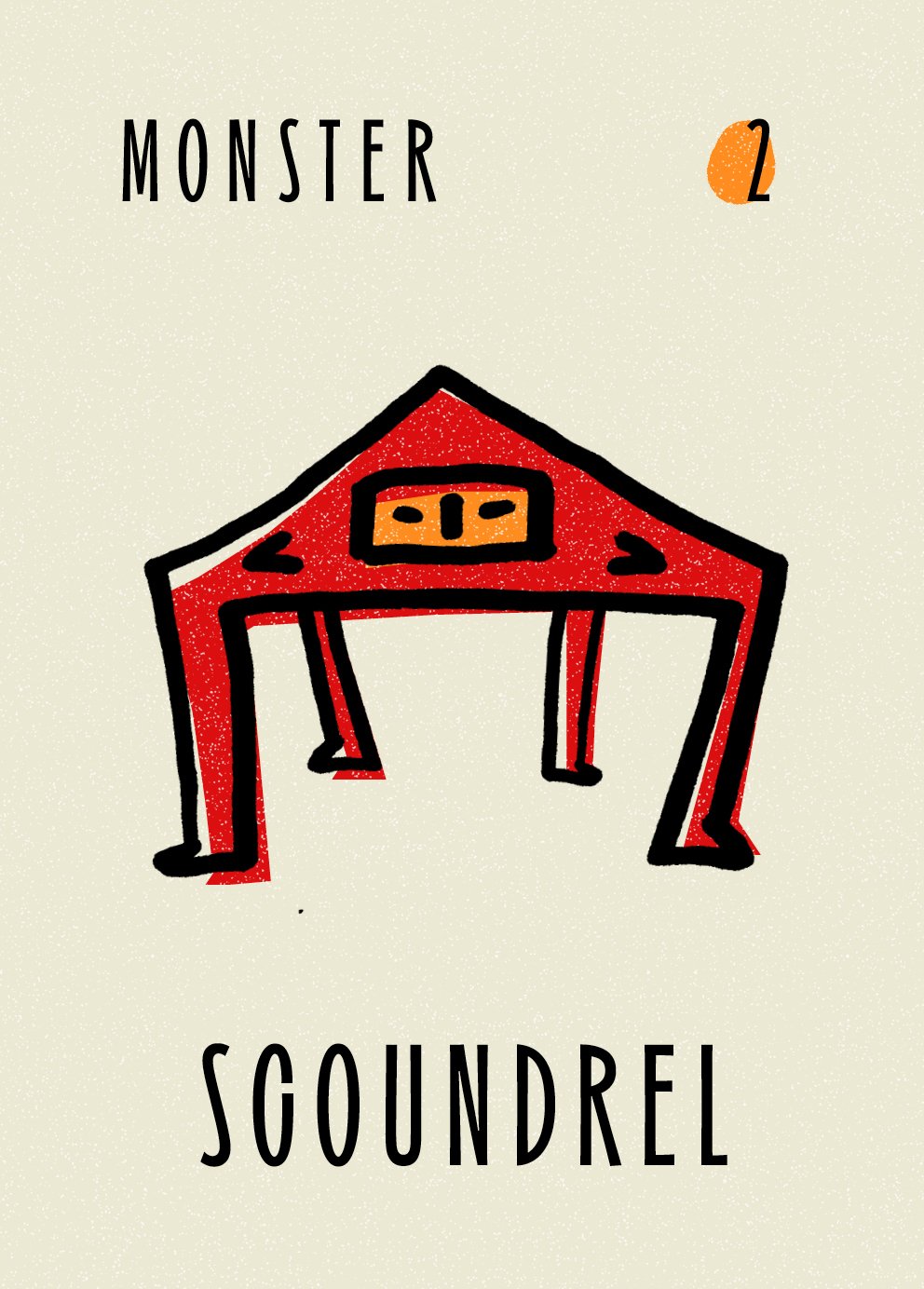
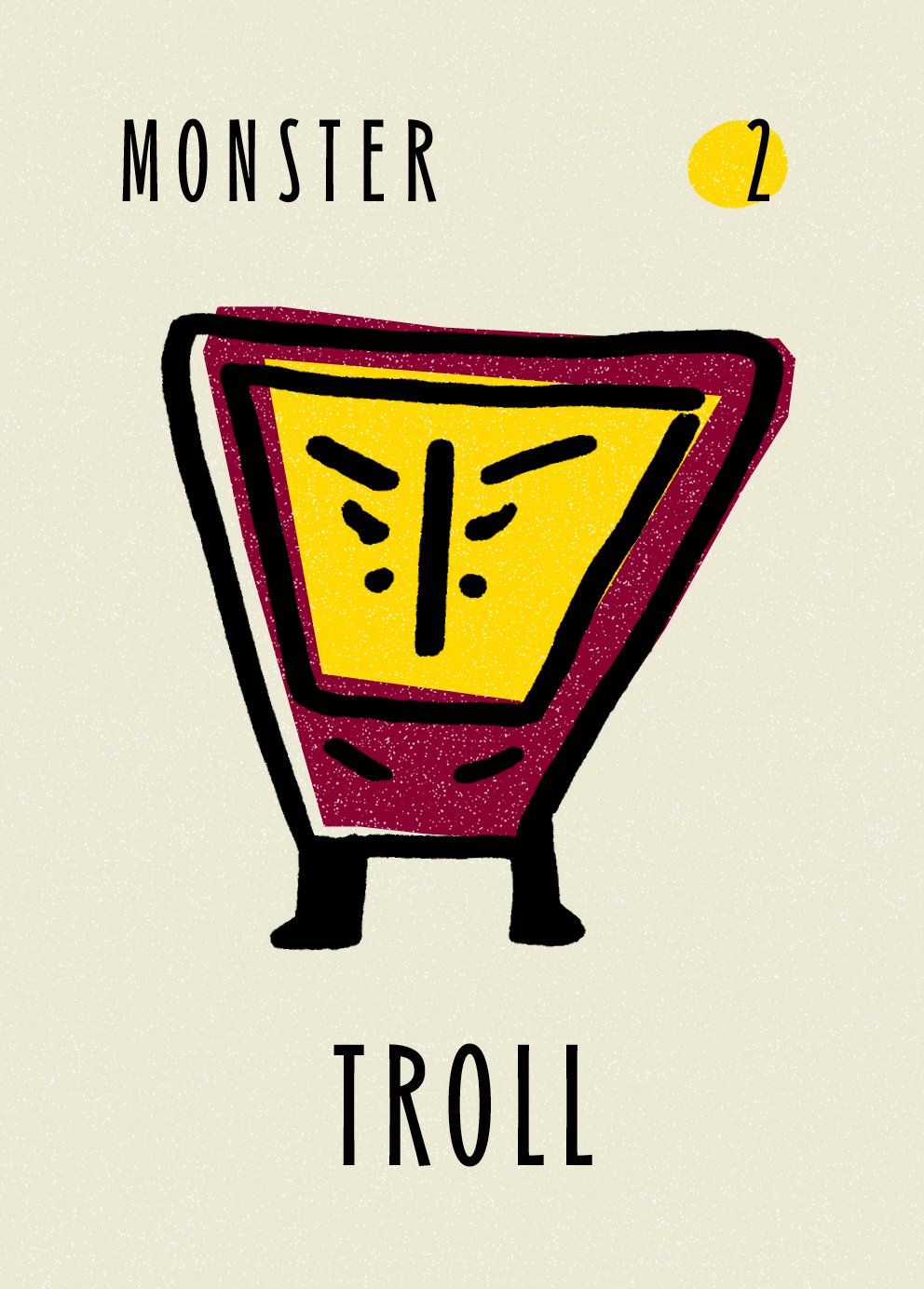


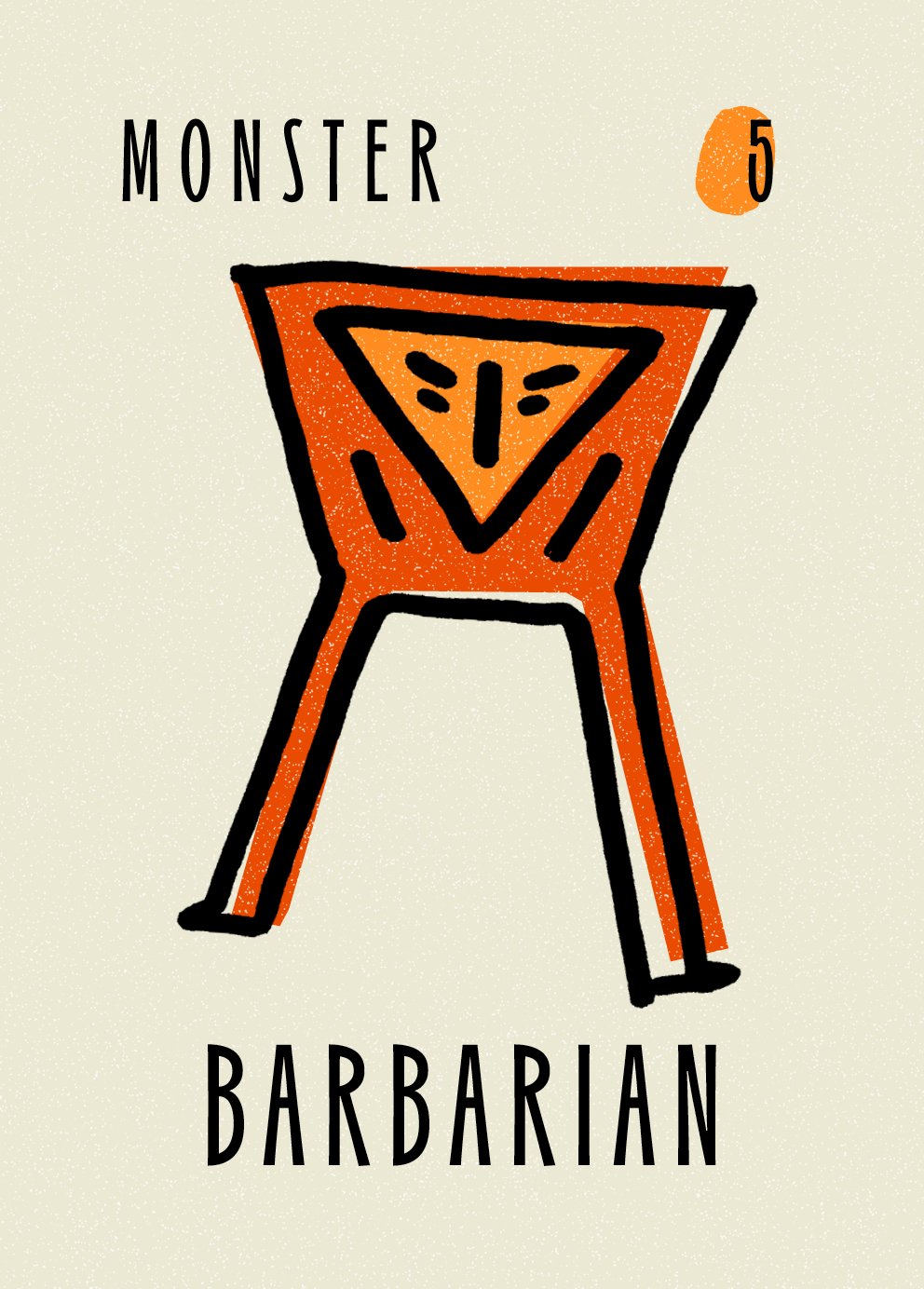

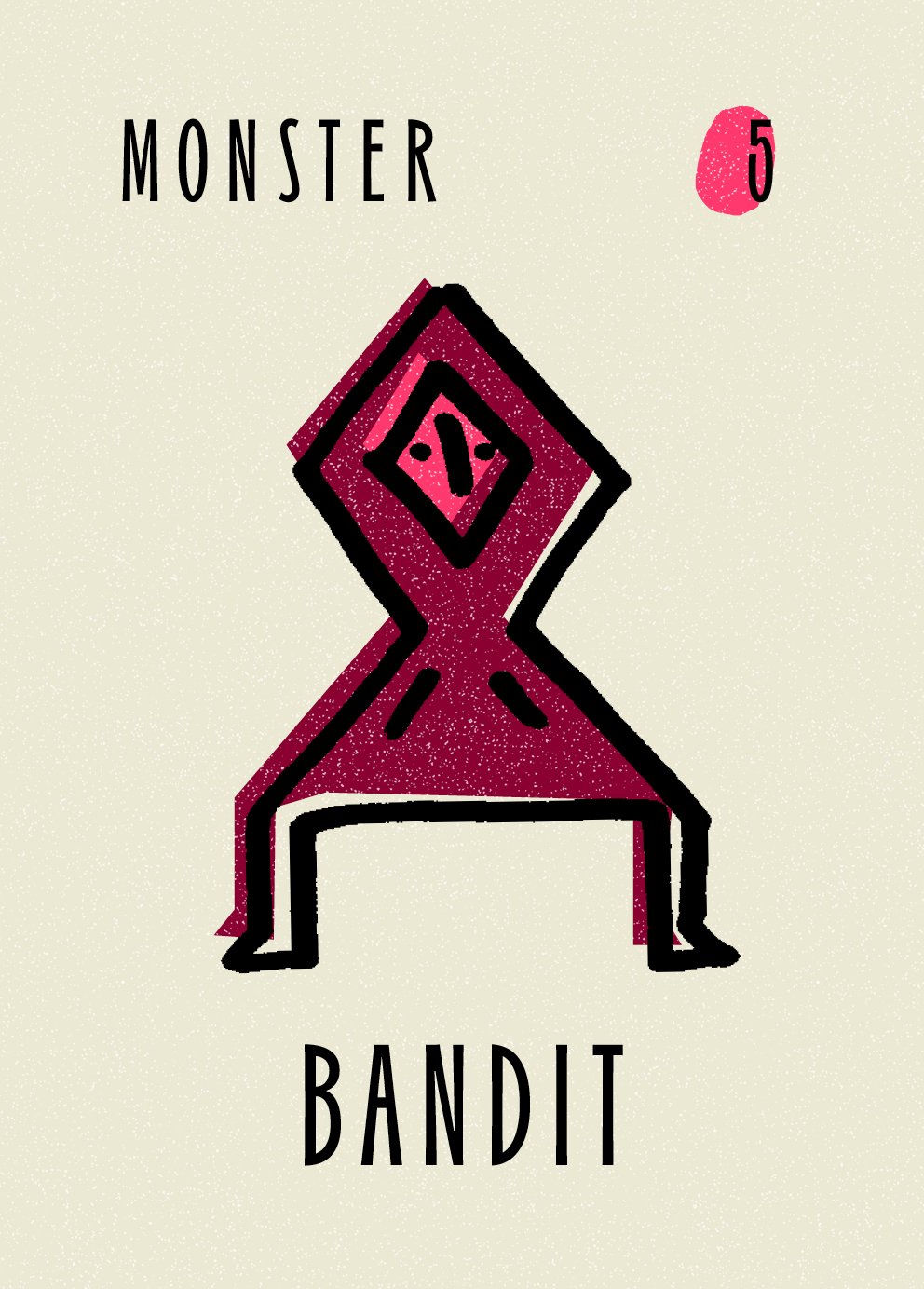
The Journey
After creating the character design, there was one more visual that would anchor the overall brand: the journey. The challenge was, if all of the characters are abstract, then how do I represent a progression in a way that is consistent with the other visuals? I pulled from another ancient artistic tradition, the mandala. I have used mandalas as a form of meditation since I was a child and in my practice, they are characterized by layers of patterns that build off of the one before. In the Buddhist tradition, mandalas are often used to represent the story of the universe. The journey became the building of a simplified mandala in four stages.
The mandala pattern became a central part of the visual identity of the game. It symbolized not just a single hero’s journey but also the shared experience in gameplay. The motifs introduced in the mandala pattern were used throughout the game on the back of the cards, the instructions, the box, and the board.
Boons & Banes
The boons and banes cards are the cards that add extra layers to the strategy and gameplay. When interviewing people, a lot of players’ favorite cards from games were the cards that gave them an extra edge or the ability to sabotage another player. I wanted to add these “special action” cards to the deck but keep them thematically relevant. The cards were an opportunity to extend the voice of the brand in the names and descriptions of the cards. These cards were also an opportunity to add abstract symbols to the visual identity.
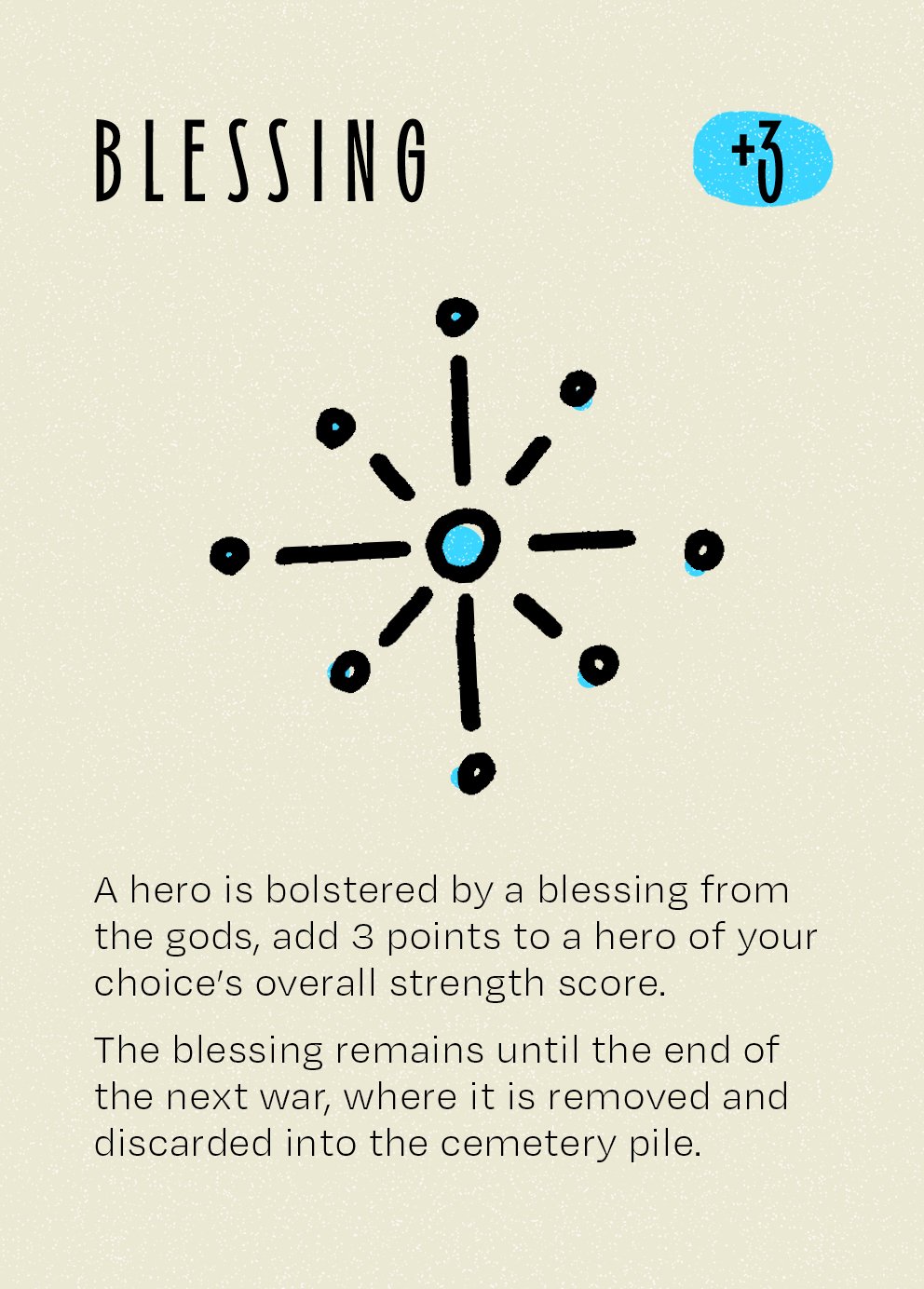
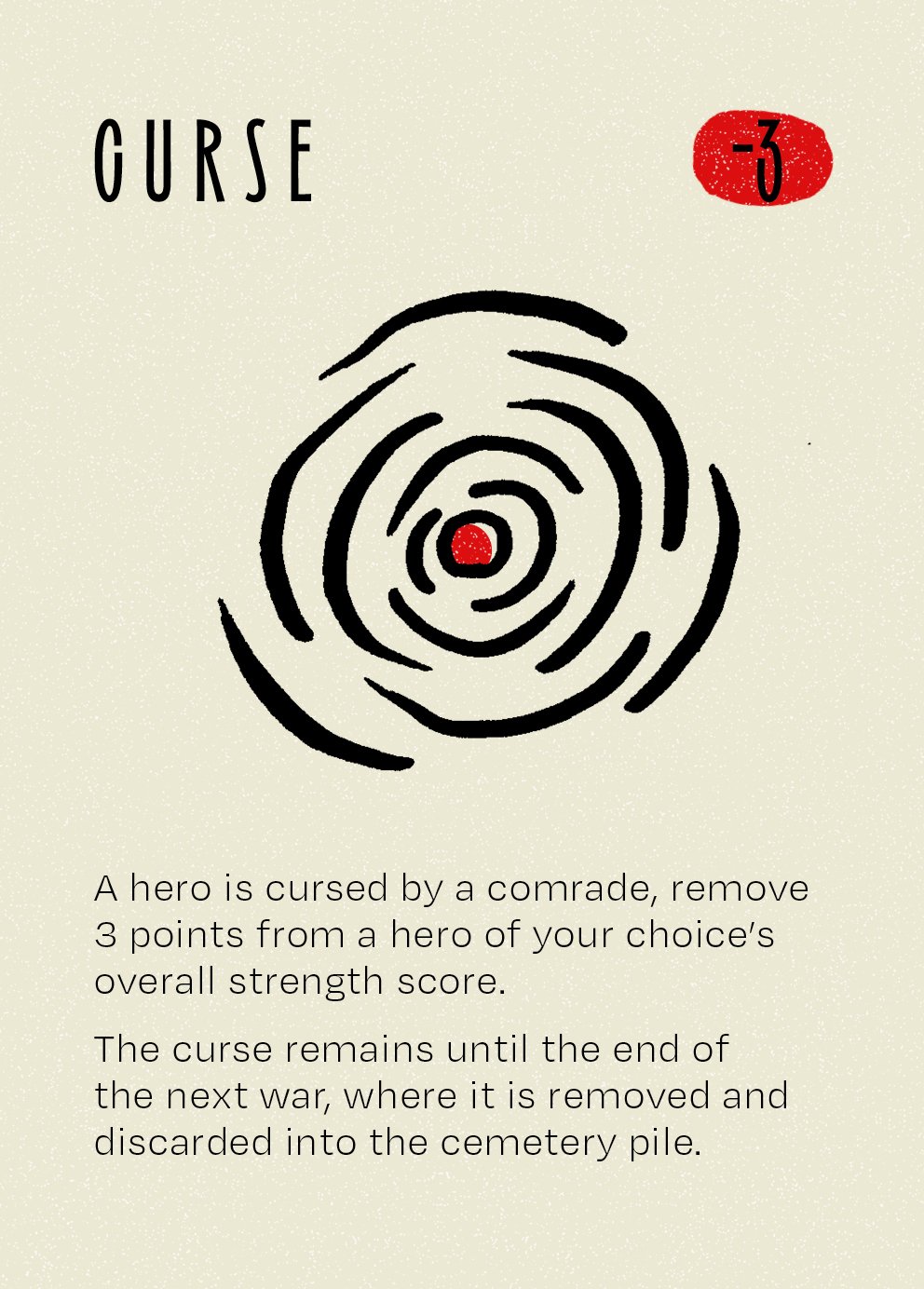
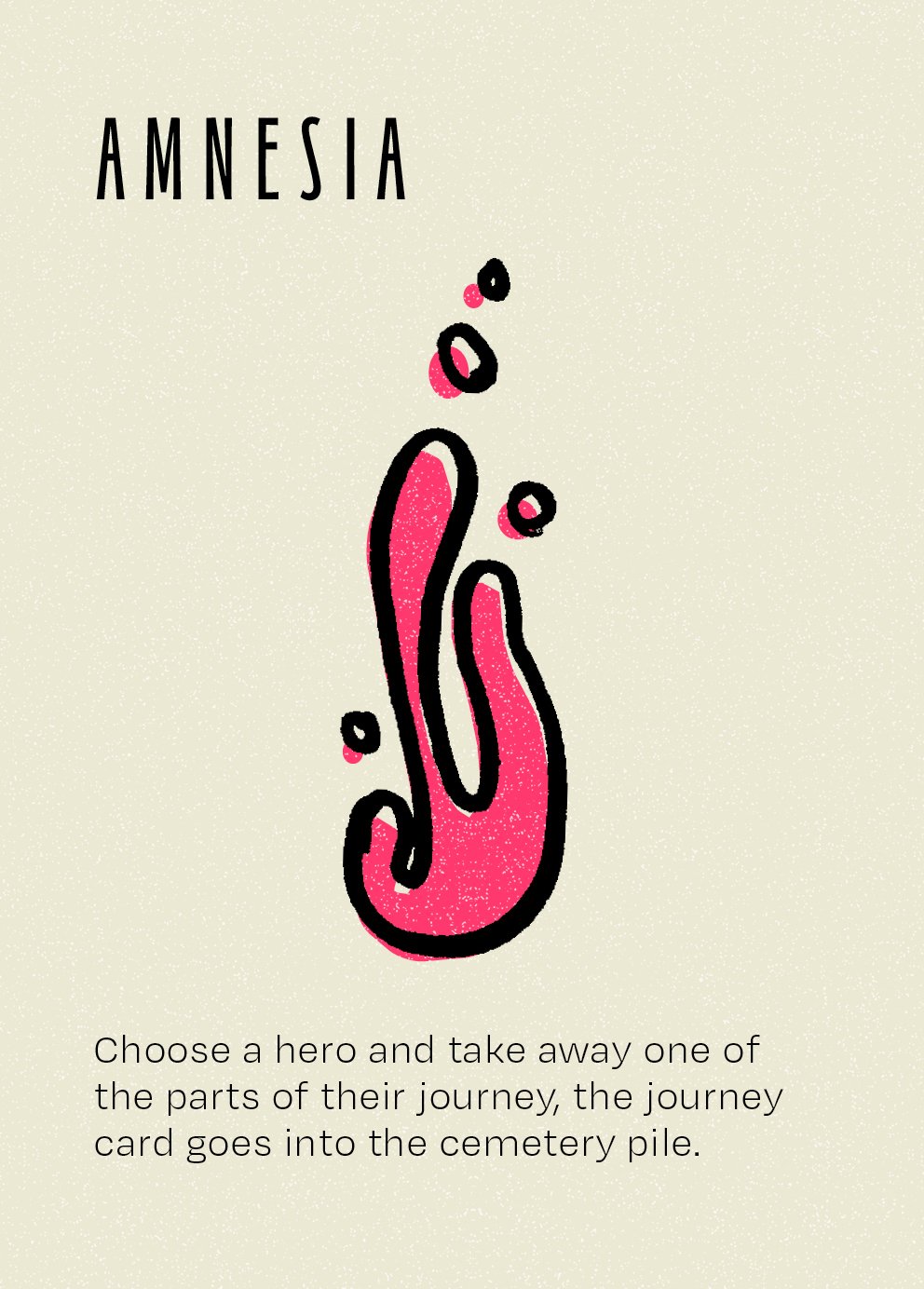
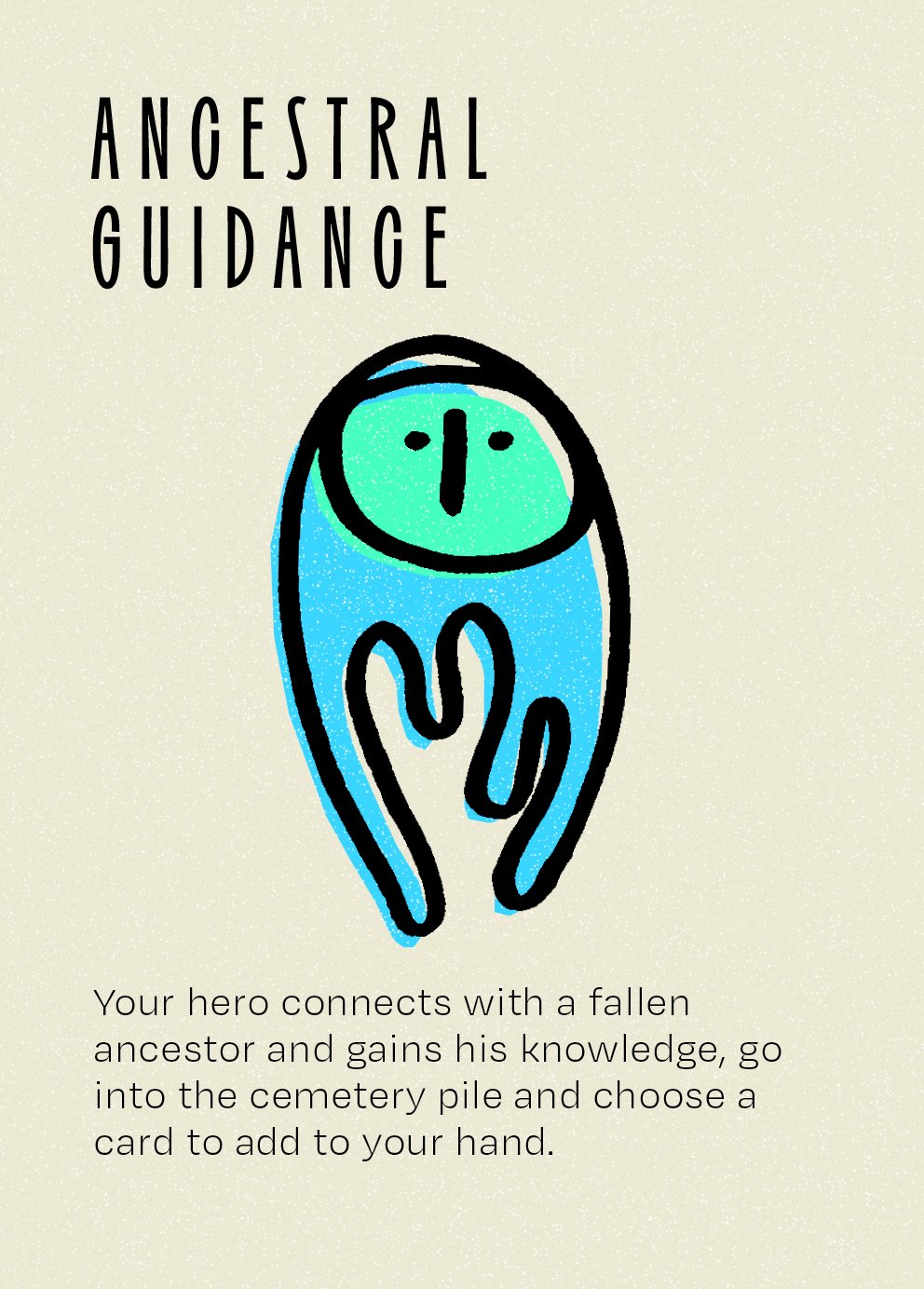
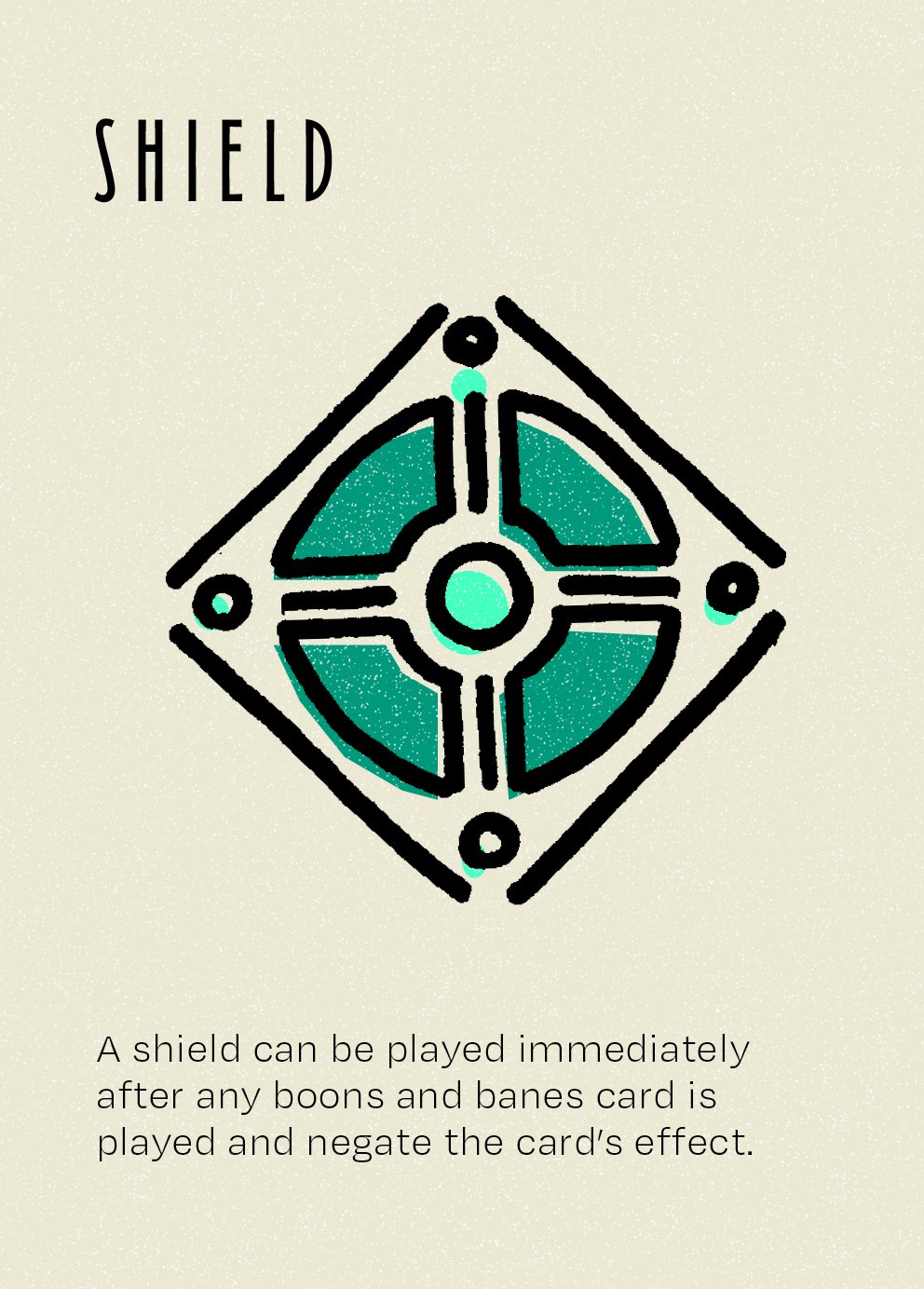
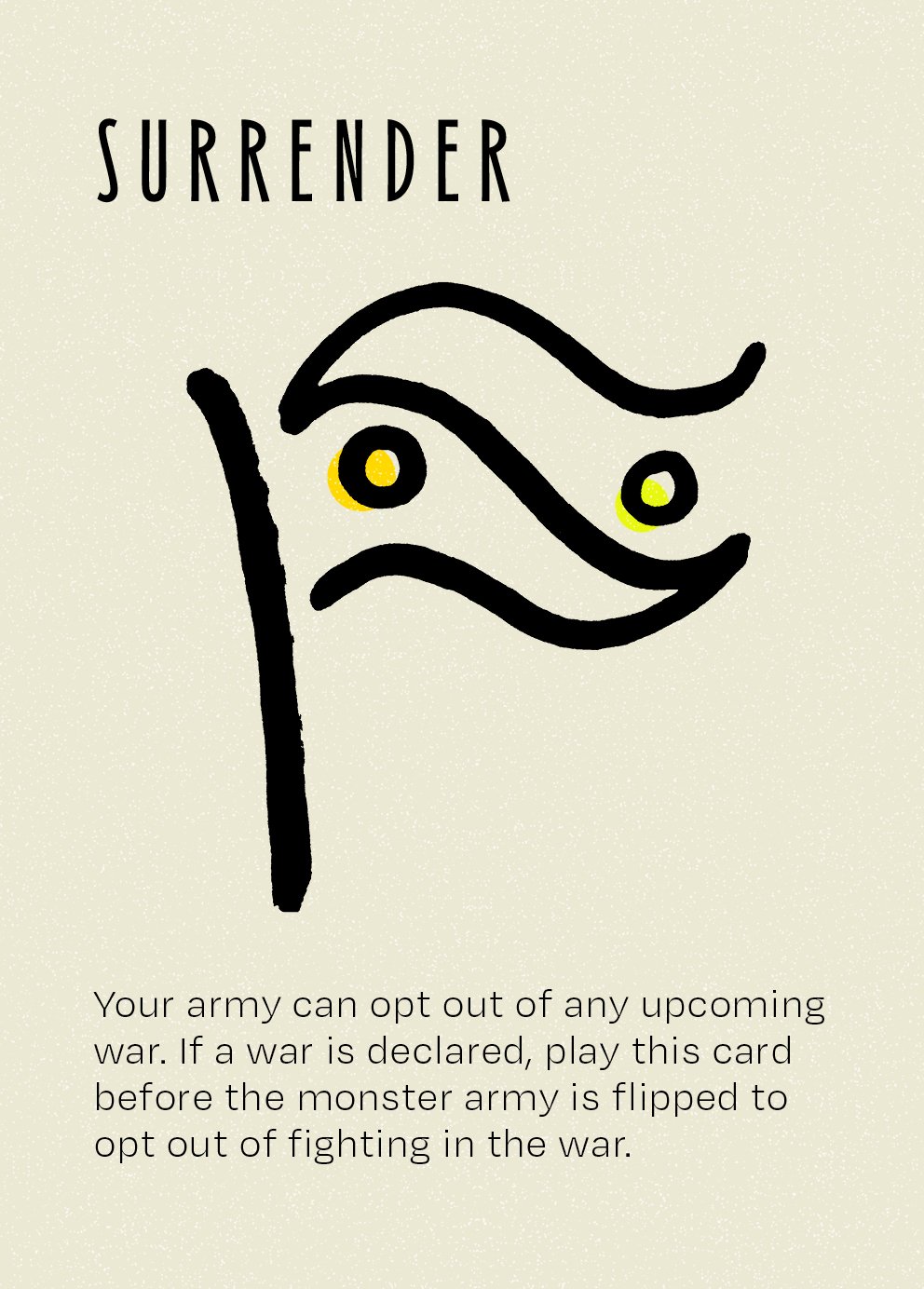
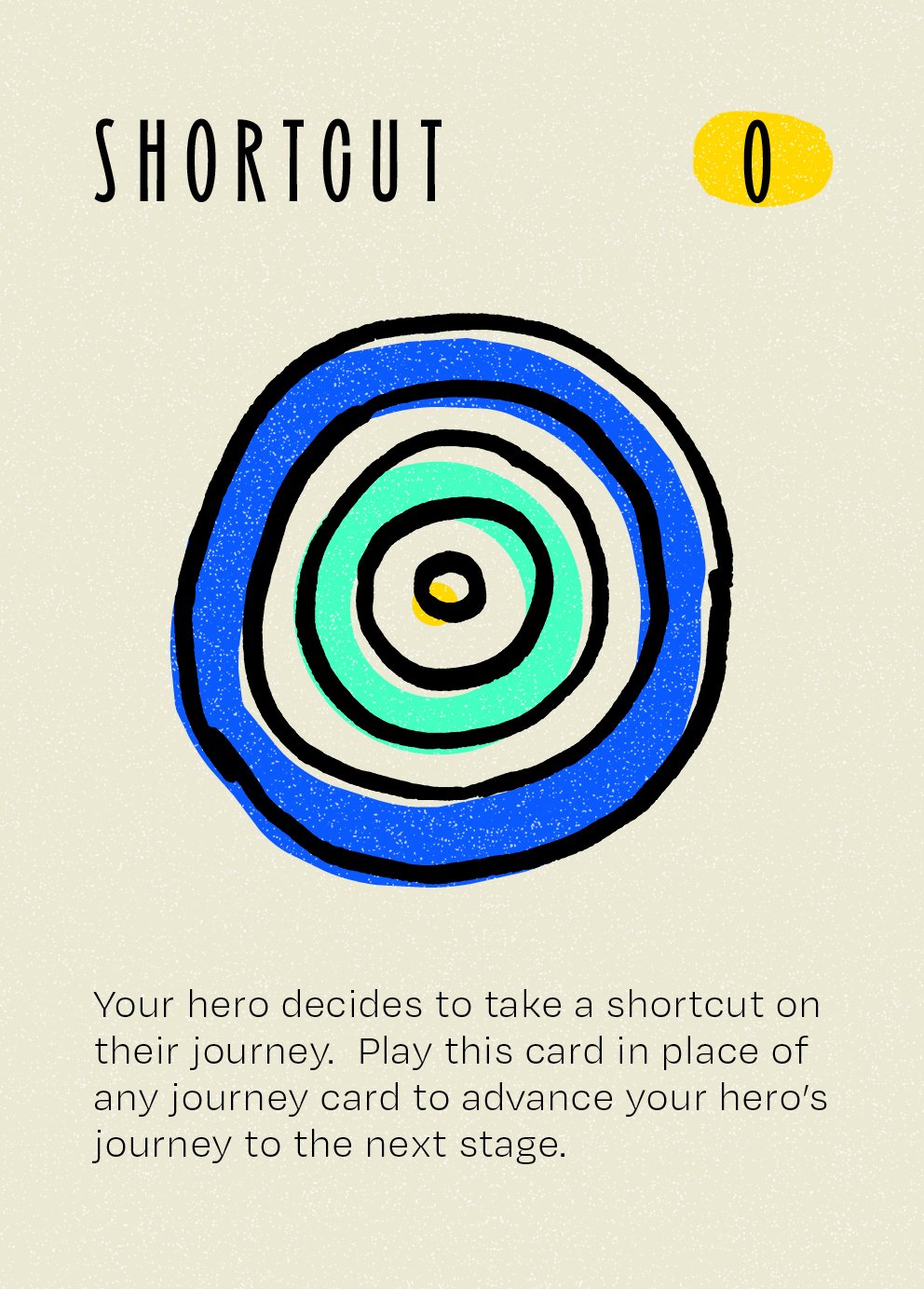
Game Pieces
Tokens, Board, Monster Piece
The spoils of war tokens were a central part of the gameplay from the beginning, they are the marker for players' progress toward victory. Having something that signifies a point is not only rewarding for the player, but it also helps other players strategize against whoever is winning.
The board and monster piece came later in the process. After play testing, it was obvious that players needed some way to track the monster army’s strength during a war without doing the math in their heads. The board and monster piece were created to alleviate that strain. I wanted both components to feel connected to the overall design of the monsters because they are closely linked. That is why I chose to keep both shapes angular and use colors from the monster palette.
Packaging
The packaging is the component that brought Rixus from a collection of pieces and an idea to a certified card game. One of my goals with the packaging was to keep it compact, it was important to me that it felt like the box was made FOR the game and that there was no unnecessary space. I researched the information that was often included in game packaging and worked to place that information organically into the surface design. The mandala pattern was the structure that held the layout together. The inner shell of the box was where more of the personality of the game came out in a character pattern as well as a short description of the game.
Instruction Booklet
The instruction booklet was a challenge in typesetting and copywriting. Reading the instructions is both the most crucial part of a game night and the part most people would like to skip altogether. It's important for instructions to set the players up for success with the least information possible. The typesetting needed to be clean and tight while leaving enough room for diagrams and visuals. I also needed to work within very specific size constraints because the booklet itself also needed to fit inside the game box.
Fabrication
From the beginning, I had my heart set on walking away from this project with a physical, professional-feeling game. Accomplishing that goal involved a lot of learning about printing and using some skills that had remained dormant since 2020. My colors were very saturated and it took a lot of trial and error to produce prints that represented my vision. I took those prints and hand bound the instructions booklet. I also took advantage of the resources I had in the Tyler School of Art and Architecture to create the game pieces. I learned how to set up files for a 3D printer as well as use a laser cutter and engraver.
Reflection
This was truly a bucket list project. I love card games, and I love the community that playing a fun card game creates. Game nights are my favorite hangouts and my favorite family activities. Creating a card game that could seamlessly be added into the rotation of any game night is extremely fulfilling. I tackled every facet of design thinking in the process and pushed my skills to new heights.

















